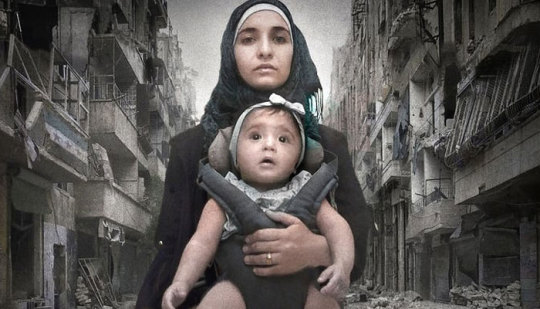#Murray et al. 2019
Explore tagged Tumblr posts
Text
Equality vs. Equity
Equality ensures that everyone gets the same starting point and is judged based on their actions and abilities, not their identity. Equity aims to achieve equal outcomes rather than equal opportunities, but often involves providing preferential treatment to certain groups based on factors such as race, gender, or socioeconomic status (Kendi, 2019). While the intention is to correct historical disadvantages, it can sometimes lead to individuals from historically “privileged” groups facing unfair treatment despite having no personal advantage (Sowell, 2004). This can create resentment and further division, as it may favor certain groups over others regardless of individual merit or effort.
When institutions implement equity policies—such as preferential hiring, admissions, or promotions—they send a message that they believe people from disadvantaged backgrounds cannot compete on a level playing field. This can be condescending and reinforce negative stereotypes rather than eliminating them (Sowell, 2004). Research has shown that affirmative action policies can lead to stigma, where beneficiaries of such programs are perceived as less competent, even when they are highly qualified (Leslie et al., 2014). Many individuals from challenging circumstances develop resilience, work ethic, and problem-solving skills that make them highly capable. Equity policies often assume these individuals need external advantages rather than recognizing that overcoming adversity can enhance their competitiveness naturally (Heriot, 2018).
If people receive advantages based on external factors rather than their effort and competence, it can create an expectation of continued assistance. This may discourage self-reliance and personal responsibility, fostering a mindset where success is seen as something given rather than earned. Dependency on preferential treatment can reduce motivation and self-efficacy, leading individuals to underestimate their own abilities and potential (Schmidt, 2008). Furthermore, studies on welfare and affirmative action programs have shown that long-term reliance on external aid can sometimes hinder upward mobility by creating disincentives for personal effort and achievement (Murray, 1984; Sowell, 2004).
Equity frameworks often categorize people into broad groups based on race, gender, or socioeconomic background, assuming that all members of a “privileged” group have an advantage and all members of a “disadvantaged” group need assistance. This overlooks individual circumstances—such as a wealthy minority student or a struggling white student from a low-income family—leading to policies that don’t always help those who truly need it. It is an oversimplification to assume that every white person is privileged, as privilege is influenced by various intersecting factors such as class, geography, and personal circumstances (McIntosh, 1989).
Research has shown that race-based affirmative action can sometimes benefit middle- and upper-class minorities more than low-income individuals of any race, failing to address economic disparities effectively (Carnevale & Strohl, 2010). Additionally, such broad classifications reinforce stereotypes rather than promoting true social mobility based on actual need (Sowell, 2004).
Equity-based policies sometimes prioritize group identity over individual merit. This can result in a more qualified individual being passed over in favor of someone from an “underrepresented” group, not due to their abilities but because of their demographic characteristics. This undermines the principles of meritocracy and individual achievement (Sowell, 2004). For example, when race-based affirmative action policies were rolled back in certain schools, including the University of California system, the number of Asian students admitted significantly increased, suggesting that previous policies had disadvantaged them despite their strong academic qualifications (Arcidiacono et al., 2022).
Equity inadvertently perpetuates a cycle of inequality rather than dismantling it. Such as, despite the intention of DEI policies to uplift marginalized communities, critics suggest that white women have been the primary beneficiaries of these initiatives. This is due to their status as a group that falls into both categories of “privileged” (white) and “disadvantaged” (female). As a result, some studies indicate that white women are more likely to be hired, promoted, or admitted to educational institutions under these policies compared to women of color or men from other marginalized groups (Carbado et al., 2013).
Policies based on equity can also create resentment among those who feel they are being unfairly disadvantaged. This can lead to social divisions, as some may perceive equity-driven policies as punishing certain groups rather than helping others. When individuals perceive policies as unfair or discriminatory, it can lead to feelings of alienation and resentment, which exacerbates social tensions (Feldman, 2013). Such approaches can foster a sense of grievance and competition between groups, rather than promoting unity and collaboration (Sowell, 2004). Additionally, when the focus is on group identity rather than individual achievement, it can undermine social cohesion by reinforcing divisions based on race, gender, or class (Klein, 2020).
Equality is a more effective and just approach than equity because it focuses on ensuring that all individuals have equal opportunities to succeed, rather than attempting to unfairly equalize outcomes. While equity seeks to equalize the results and level the playing field, this often involves treating people unequally. True fairness should not involve forcing equal outcomes, but rather ensuring that everyone has the same starting point and the freedom to compete based on their own abilities and hard work. By prioritizing equality of opportunity, society can foster an environment where success is determined by individual effort, not external interventions, allowing for genuine personal achievement and progress.
References:
Arcidiacono, P., Kinsler, J., & Ransom, T. (2022). Asian American Discrimination in Elite College Admissions. National Bureau of Economic Research.
Carbado, D. W., Crenshaw, K. W., Mays, V. M., & Tomlinson, B. (2013). Intersectionality: Mapping the Movements of a Theory. Du Bois Review: Social Science Research on Race, 10(2), 303-312.
Carnevale, A. P., & Strohl, J. (2010). How Increasing College Access Is Increasing Inequality, and What to Do About It. Georgetown University Center on Education and the Workforce.
Feldman, L. (2013). The Political Consequences of Perceptions of Inequality and Injustice: Evidence from the United States. The Journal of Politics, 75(2), 395-411.
Heriot, G. (2018). A Dubious Expediency: How Race Preferences Damage Higher Education. Encounter Books.
Kendi, I. X. (2019). How to Be an Antiracist. One World.
Klein, E. (2020). The Uncomfortable Truth About Affirmative Action. The Atlantic.
Leslie, L. M., Mayer, D. M., & Kravitz, D. A. (2014). The stigma of affirmative action: A stereotyping-based theory and meta-analytic test of the consequences for performance. Academy of Management Journal, 57(4), 964-989.
McIntosh, P. (1989). White Privilege: Unpacking the Invisible Knapsack.
Murray, C. (1984). Losing Ground: American Social Policy, 1950-1980. Basic Books.
Schmidt, F. L. (2008). The Role of General Cognitive Ability and Job Performance: Why There Cannot Be a Debate. Human Performance, 21(5), 395-408.
Sowell, T. (2004). Affirmative Action Around the World: An Empirical Study. Yale University Press.
#my thoughts#spilled thoughts#dei#dei must die#equity#equality#equal rights#equal justice#equalist#diversity equity and inclusion#politics#political#writer blog#writerblr#spilled writing#writing blog#writers on tumblr#personal essay#essay#mini essay#leftist#leftism#left wing#right wing women#right wing politics#right wingers#liberals#democrats#republicans#independent
3 notes
·
View notes
Text
The Stuff I Read in August 2023
Stuff I Extra Liked Is Bold
Books
Raven Stratagem, Yoon Ha Lee (2017)
Reconsidering Reparations, Olúfẹ́mi O. Táíwò (2022)
The Mirror of My Heart: A Thousand Years of Persian Poetry by Women, trans. Dick Davis (2019)
The Origins of Unfairness, Cailin O'Connor (2019)
Short Fiction
the prisoner, ignatz
The Unwanted Guest, Tamsyn Muir
She Loves to Cook, and She Loves to Eat, Sakaomi Yuzaki
Still Sick, Akashi
Born Again Bunny, ignatz
A Museum of Dubious Splendors, Studio Oleomingus
In the Pause Between the Ringing, Studio Oleomingus
The Indifferent Wonder of an Edible Place, Studio Oleomingus
Game Theory
The Bargaining Problem, John Nash (1950)
Two Person Cooperative Games, John Nash (1953)
Perfect Equilibrium in a Bargaining Model, Ariel Rubinstein (1982)
Marriage and household decision making: A bargaining analysis, Marilyn Manser and Murray Brown (1980)
Evolutionary Game Theory
The theory of games and the evolution of animal conflicts, John Maynard Smith (1974)
The Logic of Animal Conflict, John Maynard Smith and George R. Price (1973)
Why imitate, and if so, how? A boundedly rational approach to multi-armed bandits, Karl Schlag (1996)
On the Stability of Racial Capitalism, Liam Kofi Bright, Nathan Gabriel, Cailin O'Connor, Olúfẹ́mi O. Táíwò
Fairness and Signaling in Bargaining Games, Mihaela Popa-Wyatt, Roland Mühlenbernd Jeremy L. Wyatt
Inequality and Inequity in the Emergence of Conventions, Calvin Cochran and Cailin O'Connor (2019)
Power by Association, Travis LaCrois and Cailin O'Connor (2020)
Why Natural Social Contracts are not Fair, Cailin O'Connor (2022)
How to Put the Cart Behind the Horse in the Cultural Evolution of Gender, Daniel Saunders (2022)
Division of Labor, Economic Specialization, and the Evolution of Social Stratification, Joseph Heinrich and Robert Boyd (2008)
On the emergence of minority disadvantage: testing the cultural Red King hypothesis, Aydin Mohseni, Cailin O'Connor, and Hannah Rubin (2021)
Philosophy (broadly construed)
"But What Are You, Really?" The Metaphysics of Race, Charles W. Mills (1998)
Heterosexualism and the Colonial/Modern Gender System, Maria Lugones
Extracted Speech, Rachel Ann McKinney (2016)
Nozick's Entitlement Theory of Justice, Kenneth J. Arrow (1978)
Nietzsche, the Chinese Worker's Friend, Ishay Landa (1999)
Measuring Conventionality, Cailin O'Connor (2020)
Other
Who Was Barbie? various @ nplusonemag
Lockhart's Lament, Paul Lockhart
Female Hunters of the Early Americas, Randall Haas et al.
We Have No Moat, and Neither Does OpenAI, anonymous
The Bitter Lesson, Rich Sutton
The Evolution of Individual and Cultural Variation in Social Learning, Alex Mesoudi et al.
Medieval Arab Lesbians and Lesbian-Like Women, Sahar Amer (2009)
"My son was castrated as a result of a medical error. Is it OK to raise him as a eunuch?" Thomas W. Johnson and Richard J. Wassersug (2021)
#reading prog#as you can tell most of the evo game theory is complete contemporary crap#everyone thinks they're a psychohistorian
9 notes
·
View notes
Text
Η Τέχνη του Σώματος: Τα Τατουάζ

Δημηουργός: Thais Ceneviva , February 11, 2022
Τα τατουάζ αποτελούν μια σύγχρονη τάση στολισμού του σώματος, δηλαδή συνιστούν μια διαδεδομένη χρήση της τέχνης επάνω στο δέρμα (Armstrong et al., 2002). Αρχικά, τα τατουάζ συνιστούν κάτι το αρκετά εντυπωσιακό και μοναδικό και συνήθως τα άτομα επιλέγουν να «χτυπήσουν» κάποιο τατουάζ για διάφορους και περίπλοκους παράγοντες. Τα τατουάζ είναι ευρέως γνωστά, ιδιαίτερα όμως, στους εφήβους και τους φοιτητές (Kang & Jones, 2014). Η ιστορία τους πηγάζει από πολύ παλιά και εξακολουθούν να είναι κοινή πρακτική σε αρκετές χώρες και πολιτισμούς (Oanta et al., 2014). Το τατουάζ παρουσιάζεται ως μια προσωπική δήλωση του ατόμου στην κοινωνία του, ωστόσο η διαδικασία ερμηνείας αυτής της δήλωσης από την κοινωνία διαφέρει ανάλογα με τα χρόνια (Cesare, 2011). Το παρόν άρθρο λοιπόν, έχει ως στόχο να εξετάσει τα κίνητρα των ατόμων, και κυρίως των νέων, πίσω από την επιλογή των τατουάζ και την εύρεση των μηνυμάτων που λαμβάνουν οι άλλοι για αυτά.
Η ιστορία των τατουάζ
Η εφεύρεση των τατουάζ δεν αποτελεί κάτι καινοτόμο. Η ιστορία των τατουάζ επεκτείνεται από πολλά χιλιάδες χρόνια πριν. Όλα ξεκίνησαν από το 3300 π.Χ. όπου έκαναν την πρώτη τους εμφάνιση στην αρχαία Αίγυπτο (Manuel & Sheehan, 2007). Τότε τα τατουάζ χρησιμοποιούνταν προκειμένου να δείξουν την κοινωνική θέση κάποιου ή την θρησκευτικότητά του. Ύστερα, εξαπλώθηκε στην Δύση από τους ναυτικούς (Manuel & Sheehan, 2007). Σήμερα, μετά τα τέλη του 19ου αιώνα και στις αρχές του 20ου τα τατουάζ έχουν περιθωριοποιηθεί στην κοινωνική ζωή (Manuel & Sheehan, 2007). Ακόμη, από το 1980 τα τατουάζ έχουν καταφέρει να αποκτήσουν δημοτικότητα μεταξύ των εφήβων και των φοιτητών, οι οποίοι ανανέωσαν και διαφοροποίησαν τις τάσεις και τις επιλογές στον χώρο των τατουάζ (Kang & Jones, 2014).
Αναφορικά με το βιβλίο The World of Tattoo του Manuel V. Artigue (2016), η ιστορία των τατουάζ περιείχε αξίες παραδοσιακές και πολιτιστικές. Ωστόσο, με την πάροδο του χρόνου τα τατουάζ ερμηνεύεται ως ένας τρόπος αυτοέκφρασης κυριότερα ανάμεσα στους νέους καθ’ όλη την διάρκεια της ιστορίας (Friedman et al., 2018). Επίσης, αξίζει να αναφερθεί πως στο παρελθόν τα τατουάζ τα χρησιμοποιούσαν κυρίως μοτοσικλετιστές για αυτό και θεωρούνταν τότε κακής φήμης. Τελευταία, ωστόσο, η φήμη αυτή έχει διαμορφωθεί ταχεία καθώς τα τατουάζ έχουν γίνει κοινά αποδεκτά και εντοπίζονται ανάμεσα στους αθλητές, ροκ σταρ και διάφορα άλλα είδωλα (Forbes, 2001). Όπως αναφέρεται συχνά από τους σημερινούς νέους, τα τατουάζ συνιστούν δύναμη, μέσω της οποίας οποιαδήποτε κοινωνία ενδέχεται να διεκδικήσει την αυτονομία της (Kang & Jones, 2014).
Κίνητρα πίσω από τα τατουάζ
Το να κάνει κάποιος τατουάζ ακολ��υθείται από διάφορους παράγοντες, δηλαδή τα κίνητρα των νέων διαφέρουν. Με άλλα λόγια, τα κίνητρα ποικίλουν αναλόγως με τις διάφορες συνθήκες όπως είναι η χρονιά, το άτομο, η κουλτούρα και η μόδα (Oanta et al., 2014). Ακόμη, πέρα από την ψυχολογική δέσμευση, τα τατουάζ εκπροσωπούν και μια χρονική επένδυση (καθώς το άτομο κάνει έρευνα ξοδεύοντας χρόνο σχετικά στο πού θα κάνει το τατουάζ και ο χρόνος που ξοδεύει στις συνεδρίες) αλλά και αντιπροσωπεύει οικονομικήκαι σωματική δέσμευση (Oanta et al., 2014). Αρκετές μελέτες όπως αυτή των Stirn et al., (2011) αποδεικνύουν πως το βασικό κίνητρο πίσω από τα τατουάζ αποτελούν αιτίες αισθητικής. Άλλες υποστηρίζουν πως τα τατουάζ αντιπροσωπεύουν κάτι συμβολικό ως υπενθύμιση ενός ανεπανάληπτου γεγονότος ή έναν αγώνα ζωής, που αποτελούν το 25,1% των ατόμων με τατουάζ, ή την επέκταση της προσωπικότητας και την έκφραση του εαυτού (Naudé et al., 2019).
Επιπλέον, τα τατουάζ μπορεί να εκπροσωπούν μια μορφή ενδυνάμωσης και ψυχολογικής αποκατάστασης για τους φοιτητές και τους εφήβους. Η διαδικασία των τατουάζ τους δίνει την ευκαιρία να διαισθανθούν ότι κατέχουν τον έλεγχο του σώματός τους και την γενικής τους εικόνας, αποδίδοντάς τους αυτοεκτίμηση και ικανοποίηση (Murray & Hines, 2014).

Δημιουργός: Robin Shaw, aka FireFinch is KZN’s youngest female tattoo artist., Nov 4, 2022
Τατουάζ και τα μηνύματα που μεταφέρουν
Τα τατουάζ, ειδικότερα στους νέους, λειτουργούν ως προσωπική δήλωση στις κοινωνίες (Cesare, 2011). Συχνά, μέσω των τατουάζ, οι νέοι διαδίδουν μηνύματα για την προσωπική τους ταυτότητα ή ακόμη, την ένταξή τους σε κοινωνική ομάδα. Τα τατουάζ μπορεί να μεταδίδουν και κοινωνικά ή πολιτικά μηνύματα (Timming, 2017). Οι νέοι χρησιμοποιούν τα τατουάζ για να αμφισβητήσουν την κοινωνική τάξη ή να δηλώσουν την ελευθερία τους στο διαφορετικό (Tewksbury & Mustaine, 2008). Τέλος, τα τατουάζ από την μία γίνονται όλο και πιο αποδεκτά αλλά από την άλλη εξακολουθούν να συνδέονται με αρνητικά στερεότυπα όπως για παράδειγμα, αυτοί με τατουάζ είναι λιγότερο αξιόπιστοι και σοβαροί, γεγονός που επιρεάζει την κοινωνική και επαγγελματική ζωή τους (Zane et al., 2016).
Πλεονεκτήματα και μειονεκτήματα της πρακτικής των τατουάζ
Όταν κάποιος αποφασίζει να κάνει τατουάζ, συμπεριλαμβάνονται και αρκετά πλεονεκτήματα και μειονεκτήματα. Από την μία τα τατουάζ ενδυναμόνουν την αυτοεκτίμιση. Η διαδικασία των τατουάζ δίνει πάτημα στους νέους να κατανοήσουν την προσωπική τους ταυτότηταν και να εκφράσουν την μοναδικότητα που διαθέτουν (Tewksbury & Mustaine, 2008). Από την άλλη, τα τατουάζ υπάρχει περίπτωση να προκαλέσουν κινωνικές προκαταλήψεις. Όπως αναφέρθηκε και νωρίτερα, μπορεί τα τατουάζ να είναι πλέον κοινά αποδεκτά, ωστόσο οι νέοι μπορεί να αντιμετωπίσουν αρνητικές κριτικές κυρίως σε επαγγελματικό περιβάλλον. Αναφορικά με τους Zane et al. (2016) υποστηρίζεται πως η απεικόνιση της νεολαίας με τατουάζ έχει επιρροή στηναντίληψη των άλλων όσον αφορά την επαγγελματική του σταδιοδρομία, δηλαδή την ικανότητά του και την αξιοπιστία του.
Σύγχρονη τάση και το μέλλον των τατουάζ στους νέους
Τα τατουάζ στους νέους συνεχίζουν να εξελίσσονται, με νέες τάσεις και τεχνικές να εμφανίζονται συνεχώς. Η χρήση UV-χρωμάτων και η συνδυασμένη χρήση ψηφιακής τέχνης και τατουάζ καθιστούν τα τατουάζ μια δυναμική και εξελισσόμενη μορφή τέχνης (Tattoo Life Magazine, 2023). Οι νέοι επηρεάζονται σε μεγάλο βαθμό από τα κοινωνικά δίκτυα, όπου μπορούν να δείξουν τις δημιουργίες τους και να πάρουν έμπνευση από άλλους (Zide & Cockerham, 2015).
Συμπέρασμα
Συμπερασματικά, τα τατουάζ στους νέους συνεχίζουν να αποτελούν έναν σημαντικό τρόπο έκφρασης και προσωπικής δήλωσης. Χρησιμοποιούνται ως ένας δημιουργικός τρόπος στολισμού του σώματος. Παρά τη γενικότερη αποδοχή, η κοινωνία εξακολουθεί να έχει προκαταλήψεις και στερεότυπα σχετικά με τα άτομα με τατουάζ. Ωστόσο, τα τατουάζ παραμένουν μια δημοφιλή μορφή καλλιτεχνικής και κοινωνικής έκφρασης για τους νέους, που χρησιμοποιούν αυτή τη μορφή τέχνης για να εκφράσουν την ταυτότητά τους, τις αξίες τους και τις προσωπικές τους πεποιθήσεις.
ΑΝΑΦΟΡΕΣ
Armstrong, M. L., Owen, D. C., Roberts, A. E., & Koch, J. R. (2002). College students and tattoos: Influence of image, identity, family, and friends. *Journal of psychosocial nursing and mental health services, 40*(10), 20-29.
Cesare, N. L. (2011). Wearing your life as a sleeve: examining tattooing as a form of postmodern identity expression (Bachelor's thesis, Ohio University).
Forbes, G. B. (2001). College students with tattoos and piercings: Motives, family experiences, personality factors, and perception by others. *Psychological reports, 89*(3), 774-786.
Friedman, R., Antoine, D., Talamo, S., Reimer, P. J., Taylor, J. H., Wills, B., & Mannino, M. A. (2018). Natural mummies from Predynastic Egypt reveal the world's earliest figural tattoos. *Journal of Archaeological Science, 92*, 116-125.
Kang, M., & Jones, K. (2014). Why do people get tattoos?. In *Understanding Deviance* (pp. 266-271). Routledge.
Manuel, L., & Sheehan, E. P. (2007). Getting inked: tattoos and college students. *College Student Journal, 41*(4), 1089-1098.
Murray, M., & Hines, R. (2014). The Role of Tattoos in Identity Development and Self-Expression. *Psychology of Popular Media Culture, 3*(2), 94-103.
Naudé, L., Jordaan, J., & Bergh, L. (2019). “My body is my journal, and my tattoos are my story”: South African psychology students’ reflections on tattoo practices. *Current Psychology, 38*, 177-186.
Oanta, A., Irimie, M., Branisteanu, D. E., Stoleriu, G., & Morariu, S. H. (2014). Tattoos–history and actuality. *Bulletin of the Transilvania University of Brasov. Series VI: Medical Sciences*, 125-132.
Stirn, A., Oddo, S., Peregrinova, L., Philipp, S., & Hinz, A. (2011). Motivations for body piercings and tattoos—the role of sexual abuse and the frequency of body modifications. *Psychiatry Research, 190*(2-3), 359-363.
Tewksbury, R., & Mustaine, E. E. (2008). The Relationship between Tattoos and Deviance: A Study of College Students. *International Journal of Offender Therapy and Comparative Criminology, 52*(6), 616-639.
Timming, A. R. (2017). Tattooing and the Representation of Social Identity: A Study of Young People’s Motivations. *Journal of Youth Studies, 20*(7), 929-944.
Zane, S. N., Welsh, B. C., & Drakulich, K. M. (2016). Assessing the impact of race on the juvenile waiver decision: A systematic review and meta-analysis. *Journal of Criminal Justice, 46*, 106-117.
1 note
·
View note
Text
¿El uso recreativo de la cannabis induce a la esquizofrenia?

En estos últimos años la cannabis ha sido tema mundial debido a su legalización.
Como bien sabemos está planta tiene uso medicinal hacia diversas enfermedades, ya sea como estabilizador o calmantes.
Pero ¿porque se ha vuelto un tema de interés social?, esto es debido a que los jóvenes lo utilizan de manera recreacional, únicamente por experimentar nuevas formar de alucinar, relajarse o simplemente encajar en un círculo social, pero porque es tan peligrosa esta práctica sino es medicada.
Si bien es médicamente aprobada, no quiere decir su uso sin una prescripción no haga daño, diversos grupos de la salud se han encargado de investigar lo que está planta hace en los jóvenes.
El riesgo de desarrollar esquizofrenia asociado con la psicosis inducida por el consumo de cannabis, es esencial basarse en estudios epidemiológicos y revisiones sistemáticas actuales. A continuación, se presenta un resumen con evidencia científica:
Relación entre el consumo de cannabis y el riesgo de esquizofrenia El consumo de cannabis, especialmente en adolescentes, se ha vinculado con un mayor riesgo de desarrollar trastornos psicóticos. La evidencia indica que la sustancia puede actuar como un desencadenante en individuos genéticamente predispuestos.
🧠 Volkow, N. D., Swanson, J. M., Evins, A. E., DeLisi, L. E., Meier, M. H., Gonzalez, R., … & Baler, R. (2016). Effects of cannabis use on human behavior, including cognition, motivation, and psychosis: A review. JAMA Psychiatry, 73(3), 292-297. https://doi.org/10.1001/jamapsychiatry.2015.3278
Psicosis inducida por cannabis y esquizofrenia Un estudio realizado por Kendler et al. (2021) demostró que los individuos con psicosis inducida por cannabis tienen un riesgo significativamente mayor de desarrollar esquizofrenia en comparación con la población general. Esto sugiere que el cannabis no solo precipita síntomas psicóticos temporales, sino que podría acelerar el inicio de enfermedades subyacentes.
🧠 Kendler, K. S., Ohlsson, H., Sundquist, K., & Sundquist, J. (2021). Prediction of schizophrenia based on familial and individual risk factors in a Swedish national cohort. Psychological Medicine, 51(6), 970-977. https://doi.org/10.1017/S0033291720001967
Adolescencia como etapa crítica El consumo temprano de cannabis durante la adolescencia afecta negativamente el desarrollo del cerebro, particularmente en áreas responsables de la cognición y la regulación emocional. La exposición temprana a THC puede alterar los circuitos neuronales y aumentar la vulnerabilidad a trastornos psicóticos.
🧠 Schneider, M. (2020). Adolescence as a vulnerable period to alter rodent behavior by cannabis exposure: Implications for the endocannabinoid system and neuropsychiatric disorders. Frontiers in Psychiatry, 11, 859. https://doi.org/10.3389/fpsyt.2020.00859
Impacto del consumo frecuente y altas concentraciones de THC Las variedades de cannabis con concentraciones más altas de THC se asocian con un mayor riesgo de psicosis. Un metaanálisis indicó que el consumo diario de cannabis de alta potencia aumenta cinco veces el riesgo de desarrollar psicosis.
🧠 Di Forti, M., Quattrone, D., Freeman, T. P., Tripoli, G., Gayer-Anderson, C., Quigley, H., … & Murray, R. M. (2019). The contribution of cannabis use to variation in the incidence of psychotic disorder across Europe (EU-GEI): A multicentre case-control study. The Lancet Psychiatry, 6(5), 427-436. https://doi.org/10.1016/S2215-0366(19)30048-3

Estos argumentos destacan la relación significativa entre el consumo de cannabis y el riesgo de desarrollar esquizofrenia, enfatizando el impacto en poblaciones vulnerables como los adolescentes. Es importante considerar estas evidencias al abordar la percepción de inocuidad del cannabis en contextos educativos y clínicos.
1 note
·
View note
Text
Reality TV and Digital Publics: An Exploration
This week’s lecture focused on the complex interplay between reality TV and social media, highlighting how digital publics form and engage within the public sphere. The discussion provided historical context, explored key concepts, and examined the role of social media in reshaping audience interaction and engagement.
Key Concepts: Digital Publics and the Public Sphere
The public sphere is traditionally defined as a space where private individuals come together to discuss and influence political change (Kruse, 2018; Sakariassen, 2020). With the advent of social media, this concept has evolved into multiple digital publics, which are micro-communities formed around specific platforms and issues. Examples include hashtags like #Auspol and Tumblr fandoms.
Historical and Contemporary Context of Crowdsourcing
Crowdsourcing is not a novel concept. Historical examples such as the British government's Longitude Prize in 1714 and the Oxford English Dictionary’s reliance on 800 readers in 1884 illustrate early forms of distributed problem-solving (Chrum, 2013). In modern times, platforms like Ushahidi have been pivotal in crisis mapping, highlighting how digital technologies can mobilize citizens and unify views during crises.
Reality TV: Definitions and Audience Paradoxes
Reality TV, a dominant television genre for over 20 years, encompasses a wide range of sub-genres including gamedocs, talent contests, and celebrity-based programs (Murray & Ouellette, 2009). Despite its popularity, reality TV is often cited as the least favorite genre among surveyed audiences (Statista, 2022). This paradox underscores the complex relationship audiences have with reality TV, where they engage heavily but express disdain for the genre.
Reality TV and Social Media: Transforming Engagement
Reality TV has leveraged social media to diversify markets and enhance audience participation. Social media platforms enable reality TV stars and fans to interact across various channels, fostering a dynamic and participatory culture (Arcy, 2018). This multiplatform engagement creates digital publics where everyday political talk and social issues are discussed, reflecting the intersection of personal and political spheres (Graham & Hajru, 2011).
Case Studies: Malaysian Digital Publics and Tumblr
In Malaysia, platforms like WhatsApp and Facebook dominate digital public spaces, enabling citizens to mobilize and engage in community building (Castells, 2015). Similarly, Tumblr provides a safe space for marginalized voices, particularly for trans and gender-diverse individuals, offering a supportive environment distinct from platforms like Facebook and Instagram (Byron et al., 2019).
Implications for Broadcasters and Audiences
The convergence of reality TV and social media benefits broadcasters through increased viewer engagement and ratings. However, it also exposes participants to intense public scrutiny and potential harassment. The phenomenon of reality TV fame highlights the thin line between celebrity and ordinary individuals, with social media amplifying both positive and negative interactions (Porter, 2015).
Conclusion
The exploration of reality TV and digital publics reveals the transformative impact of social media on audience engagement and the formation of digital communities. These platforms facilitate dynamic interactions that blur the lines between personal and political spheres, reflecting broader societal trends and challenges. Understanding these dynamics is crucial for comprehending the evolving landscape of media and public discourse.
References
Arcy, J. (2018). The digital money shot: Twitter wars, The Real Housewives, and transmedia storytelling. Celebrity Studies.
Byron, P., Robards, B., Hanckel, B., Vivienne, S., & Churchill, B. (2019). Safety, visibility and interaction on LGBTQ social media platforms. Media International Australia, 171(1), 127-138.
Castells, M. (2015). Networks of outrage and hope: Social movements in the internet age. Polity Press.
Chrum, J. (2013). Crowdsourcing: Definition and History. Harvard Business Review. Retrieved from hbr.org.
Graham, T., & Hajru, A. (2011). Reality TV as a trigger of everyday political talk in the net-based public sphere. European Journal of Communication.
Kruse, M. (2018). The public sphere: Definitions and theories. Journal of Communication Inquiry, 42(1), 5-17.
Murray, S., & Ouellette, L. (2009). Reality TV: Remaking Television Culture. NYU Press.
Porter, T. (2015). Digital fandom: New media studies. Routledge.
Sakariassen, H. (2020). Public sphere revisited: Theories and debates. Media Studies Quarterly, 38(2), 89-104.
Statista. (2022). Popularity of reality TV among U.S. audiences. Retrieved from statista.com.
0 notes
Text
youtube
Reproductive health and Reproductive Justice
A Brief History #6 During the 20th century it became socially apparent that a major factor contributing to poor health of women of colour were reproductive tract infections (RTFs) (Onwuachi-Saunders, 2019). To address this issue, Loretta J. Ross became a co-founder of an initiative known as The Women of Colour Reproductive Health Collective or SisterSong, along with Dazon Dixon Diallo (Onwuachi-Saunders, 2019). This initiative supported organizations that addressed issues vital to reproductive health (such as prevention, HIV/AIDS services, midwifery, substance abuse, human/health rights advocacy, self-help care, and reproductive rights) to identify concerns, treatments, and enhance the awareness of issues surrounding reproductive health of women of colour (Onwuachi-Saunders, 2019). At the core of these initiatives was an intersectional approach based on the factors of race, socioeconomic status, ethnicity, and gender to better understand what linked these issues to reproductive health (Onwuachi-Saunders, 2019). Forming Reproductive Justice
Spear-headed by women of colour, this initiative came to form conclusions that reproductive health is polarized between the 'prolife/prochoice' frameworks with a limited scope of all the issues that women of colour face (Onwuachi-Saunders, 2019). Thus, these movements argued that a holistic approach to women's reproductive health is the best way to meet all of their needs and is central to the health of marginalized communities who manage deeper political and social issues contributing to issues in reproductive health (Onwuachi-Saunders, 2019). In response, in 1994 The Women of African Descent for Reproductive Justice in Chicago recognized that reproductive rights movements led by middle class white women were not inclusive of low income, marginalized, and racialized minority women, so they coined the term Reproductive Justice to officially address these issues.
"Reproductive justice is defined as the complete physical, mental, spiritual, political, social and economic wellbeing of women and girls, based on the full achievement and protection of women’s human rights (Ross, 2007; Ross, Solinger, 2017, as cited in Onwuachi-Saunders, 2019)". The Movement of Reproductive Justice began with a published statement of 800 signatures in the Washington Post and Roll Call which was a catalyst for SingerSong (Onwuachi-Saunders, 2019). Current Movements
These grassroots organizations laid the foundation for the #MeToo movement (founded in 2006 by Tarana Burke) and the Women's March (founded in 2017 by Teresa Shook), both of which address different human rights issues such as sexual assault, gendered violence, reproductive rights, 2SLGBTQQIA+ rights, civil rights, civil rights, disability rights, immigrant rights, and environmental justice (Onwuachi-Saunders, 2019). However, these movements receive more media attention then the Reproductive Justice Movement which most appropriately addresses the impacts of race, culture, socioeconomic status which these current movements still perpetuate to some extent (Onwuachi-Saunders, 2019). As a result, unfortunately women of colour from low socioeconomic backgrounds remain neglected despite strong movements for reproductive health (Onwuachi-Saunders, 2019). Therefore, the demands of the Reproductive Justice Movement remain unmet which is exemplified through the racial bias and mistreatment within the medical system that Black and Indigenous women face in Canada and the US (Dayo et al., 2022).
References
Onwuachi-Saunders, C., Dang, Q. P., & Murray, J. (2019). Reproductive Rights, Reproductive Justice: Redefining Challenges to Create Optimal Health for All Women. Journal of Healthcare, Science and the Humanities, 9(1), 19-31. https://www.ncbi.nlm.nih.gov/pmc/articles/PMC9930478/
Dayo, E., Christy, K., & Habte, R. (2022). Health in colour: black women, racism, and maternal health. The Lancet Regional Health - Americas, 17, 100408. https://doi.org/10.1016/j.lana.2022.100408
0 notes
Text
Representation
SOURCES AND SIGNIFICANCE BLOG POST #6
In this blog post I’ll be exploring the importance of positive representation in media. In our primarily visual culture, representation influences social interactions between people who have more mainstream identities and those within minorities. I’ll also be examining the HBO adaptation of The Last of Us and their positive representation of the characters Bill and Frank which caused waves of positive reception.
Representation in the context of media is “the way that someone or something is shown or described” (Cambridge Dictionary, 2023). Positive and natural representation of people is more important than ever as it can challenge and alter harmful and inaccurate views and opinions people have of the “Other”, which is the psychological and media phenomenon of “othering” people who exist outside of mainstream identities (Fürsich, 2010). While violence against women has improved (UN Women, 2023) hate crimes against race and LGBTQ+ people have been on the rise (APCC, 2022; Stonewall, 2023). Media can have an active role in dismantling the fear and hate at the root of these crimes.
Media has a massive impact on behaviour as mental conditioning through images and text begins in childhood (Adukia et al., 2023; Daniels et al., 2016), positive and natural representations of diversity in shows like Steven Universe and She-Ra can help children develop healthy, accurate views and even help them challenge the stereotyping they may encounter from their peers and adults. While media is usually constructed with intention (see Barthe’s (2009) semiotics theory on decoding the Myth of images, and Berger’s 1972, Ways of Seeing), I think an intention to portray accurate and truthful representations is a positive one as it challenges deplorable antisocial behaviours through eliciting an emotional and empathetic response; Lomas (2019) explores the the psychological impact of positive semiotics.
Not only can positive, realistic representations reduce prejudice, they can also offer aspirational models for LGBTQ+ people to identify with, this can be even more powerful through the portrayal of everyday day life in TV series (Masanet, M., et al., 2022).
TV series are not only helpful for children, but also for adults trying to deconstruct the conditioning of a strictly conservative upbringing or an environment that is full of stereotyping and prejudice. An example of this is the recent adaptation of The Last of Us by HBO (first aired 2023). The Last of Us franchise has a few LGBTQ+ characters, though the most notable is Ellie, who is a lesbian and the main protagonist in The Last of Us 2; a decision that made leaps for inclusivity in the gaming industry (GameRant, 2021). Other notable LGBTQ+ characters include Frank and Bill (fig.1), who were fleshed out in the TV adaptation and received their own devastatingly beautiful episode (Episode 3, Long, Long Time). It’s Frank and Bill’s episode in particular that seemed to have the greatest positive impact not only in the social circles around me, but also beyond (Esquire, 2023).

Fig. 1 Frank (left) and Bill
Frank and Bill are caucasian, middle-aged, gay men played by Murray Bartlett (left) and Nick Offerman (fig.1). Although greater representation could have been achieved with a more racially diverse casting, I wonder how much or little the impact would have diverged as a result. While great LGBTQ+ representation is beneficial for everyone, a positive aspect for the casting choice was a chance to appeal for empathy from men who may relate to the demographic, and for the rest of us, it was wonderful seeing a layered and relatable representation of a loving relationship between two complex individuals. In the three stages of representation’s evolution according to Ventura et al. (2019), the first being invisibility, the second being imperfect representation and the last being fair representation, I think The Last of Us: Long, Long Time comfortably falls into the latter as it ticks the requirements of having “effective representation, rich and multi‐layered portrayal, positive models, complex and realistic characters, diversity of roles and identities,” (Masanet et al., 2022; Ventura et al., 2019). However, as much as The Last of Us: Long, Long Time was praised, it did receive some criticism of falling into "gay death-tropes" (Andrew, 2023; MacLeod, 2023), but in a post-apocaplytic world, having shared a 20-year romance despite the widespread death around them, a tragic ending seems inevitable in the universe of The Lat of Us. All things considered, I think that Bill and Frank's love story is the start of an upward trend of good and fair representation in mainstream media.
In summary, I think it’s tragic and heartbreaking that hate crimes against race and LGBTQ+ minorities are on the rise despite positive political advances in rights and freedoms. From what I experienced from positive representations like Bill and Frank’s in The Last of Us: Long, Long Time, the exposure to realistic and identifiable characters can alter people’s perceptions and create powerful feelings of empathy, and for me personally, the desire to protect what is beautiful. I want my work to reflect my values of inclusion and my desire for accurate representation. I’ll achieve this through thorough research and sensitivity to avoid stereotypes that I may unwittingly draw on through my own ignorance or exposure to inaccurate media.
References:
ADUKIA, A. et al. (2023). What We Teach About Race and Gender: Representation in Images and Text of Children’s Books. The Quarterly Journal of Economics. 138(4), p.2225–2285. [Online]. Available at: https://doi-org.ezproxy.herts.ac.uk/10.1093/qje/qjad028 [Accessed: 8 December 2023].
ANDREW, S. (2023). How ‘The Last of Us’ did Bill and Frank justice – and impressed many LGBTQ fans. [Online]. CNN. Available at: https://edition.cnn.com/2023/01/30/entertainment/last-of-us-bill-frank-episode-3-cec/index.html#:~:t [Accessed: 4 January 2024].
APCC. (2022). Recorded Hate Crime on the Rise. [Online]. Association of Police and Crime Commissioners. Available at: https://www.apccs.police.uk/latest-news/recorded-hate-crime-on-the-rise/ [Accessed: 8 December 2023].
BARTHES, R. (2009) Mythologies. London: Vintage.
BERGER, J. (1972). Ways of Seeing , Episode 1. [Television Series]. London: BBC.
CAMBRIDGE DICTIONARY. (2023). representation. [Online]. cambridgedictionary.org. Available at: https://dictionary.cambridge.org/dictionary/english/representation [Accessed: 8 December 2023].
DANIELS, E., LAYH, M. & PORZELIUS, L. (2016). Grooming ten-year-olds with gender stereotypes? A content analysis of preteen and teen girl magazines. Body Image. 19, pp.57-67. [Online]. Available at: https://doi.org/10.1016/j.bodyim.2016.08.011 [Accessed: 8 December 2023].
ESQUIRE. (2023). That ‘The Last of Us’ Gay Love Story is Groundbreaking. [Online]. Available at: https://www.esquire.com/uk/culture/a42686416/the-last-of-us-gay-romance/ [Accessed: 8 December 2023].
FÜRSICH, E. (2010). Media and the representation of Others. International Social Science Journal. 61(199), pp.113-130. [Online]. Available at: https://doi.org/10.1111/j.1468-2451.2010.01751.x [Accessed: 8 December 2023].
GAMERANT. (2021). The Last of Us: Every LGBT+ Character in the Franchise. [Online]. Available at: https://gamerant.com/last-of-us-lgbtqia-ellie-dina-lev/ [Accessed: 8 December 2023].
LOMAS, T. (2019). Positive Semiotics. Review of General Psychology. 23(3), pp.359 - 370. [Online]. Available at: https://doi-org.ezproxy.herts.ac.uk/10.1177/1089268019832 [Accessed: 4 December 2023].
MACLEOD, R. (2023). ‘The Last of Us’ tells a new but familiar queer love story. [Online]. The Washington Post. Available at: https://www.washingtonpost.com/video-games/2023/01/29/last-of-us-bill-frank-episode-3/ [Accessed: 4 January 2024].
MASANET, M., VENTURA ,R. & BALLESTE, E. (2022). Beyond the “Trans Fact”? Trans Representation in the Teen Series Euphoria: Complexity, Recognition, and Comfort. Social Inclusion. 10(2), p.143 – 155. [Online]. Available at: https://doi.org/10.17645/si.v10i2.4926 [Accessed: 8 December 2023].
STONEWALL. (2023). New data: Rise in hate crime against LGBTQ+ people continues, Stonewall slams UK Gov ‘inaction’. [Online]. stonewall.org. Available at: https://www.stonewall.org.uk/about-us/news/new-data-rise-hate-crime-against-lgbtq-people-continues-s [Accessed: 8 December 2023].
UN WOMEN. (2023). Facts and figures: Ending violence against women. [Online]. unwomen.org. Available at: https://www.unwomen.org/en/what-we-do/ending-violence-against-women/facts-and-figures [Accessed: 8 December 2023]. Ventura, R., Guerrero, M., & Establés, M. J. (2019). Lesbian fan cyberactivism: Non‐violent protest actions against heteronormative representations of LGBTQ characters on television. In A. Iranzo & A. Farné (Eds.), Communication for social change: Proposals for action (pp. 137–157). Valencia: Tirant lo Blanch.
0 notes
Text
Prevalence of Hepatitis b and c viral infections among human immunodeficiency virus (HIV) infected patients on highly active anti-retroviral therapy (haart) in the university of port harcourt teaching hospital By Abel Charles In Journal of Clinical Case Reports Medical Images and Health Sciences

ABSTRACT
Introduction: This study determined the prevalence of hepatitis B and C viral infections among human immunodeficiency virus (HIV) infected patients on highly active anti-retroviral therapy (HAART) in the University of Port Harcourt Teaching Hospital.
Methodology: It was a purposive, cross-sectional study that was conducted in the Anti-retroviral clinic of the facility and a sample size of 38.33 (increased to 100, due to perceived small size), using a prevalence of 2.56% from a previous study by Nnakenyi et al. (2019).
Results: There was more female participation, 77.0%, majority had secondary school education, 59.0%, mostly Civil servants, 43.0%, Christians, 87.0% and mainly of Ijaw ethnicity, 39.0%. Majority had heard of HBV and HCV, 84.0%, mainly in the hospital, 36.9%, with the least from friends/family members, 6.0%, 98.0% had not been infected by any of the hepatic viruses, all of them affirmed that the viruses can be treated, 100.0%, while 72.0% confirmed the efficacy of medical treatment for the viruses and 46.0% had been vaccinated against the viruses. Also, majority opined that sexual intercourse is the main route for transmission of the hepatic viruses, 51.0%, followed by blood transfusion, 37.0% and lifestyle is the most common risk factor to contract the viruses, 71.0%. The prevalence of HBV, HCV and VDRL among HIV-infected patients on HAART was 96.0%, 98.0% and 99.0% respectively. Similarly, we observed statistical significance of HBV (0.042) and HCV (0.021), as well as, venereal diseases (0.028).
Conclusion: There is low prevalence of the hepatic viruses among HIV infected persons in the study population, while the existence of a venereal disease is a risk factor to contracting the hepatic viruses, owing to similar pathways of transmission, thus, rigorous efforts at educating the populace about the risk factors and common routes of transmission of these viruses is required.
Keywords: Hepatitis, venereal disease, HIV, HAART, infection.
INTRODUCTION
Human immunodeficiency virus (HIV) is a retrovirus that infects humans and other mammals. Infection by the virus is a huge public health problem, with African being one of the most affected by the pandemic globally resulting in an estimated 25.7 million human infections worldwide (World Health Organization [WHO], 2019).
Viral hepatitis is also a global health challenge of public concern worldwide (Ndifontiayong, Ali, Sokoudjou, Ndimumeh & Tume, 2021). Some of the features associated with the micro-organisms are high prevalence, high mortality and morbidity, poor diagnostic tools, leading to sub-optimal diagnosis and poor management approaches, especially, in developing countries (Naghavi, Wang, Lozano, Davis, Liang, Zhou, Vollset, Ozgoren, Abdalla & Abd-Allah, 2015; Mokdad, Lopez, Shahraz, Lozano, Mokdad, Stanaway, Murray & Naghavi, 2014).
Hepatitis B virus (HBV) alters the liver architecture and may progress to chronic, life-threatening conditions, such as liver cirrhosis and hepatocellular carcinoma or otherwise mild case, known as hepatitis (Nnakenyi, Uchehukwu & Nto-ezimah, 2020). The global prevalence of HBV is estimated as 0.1%-20% (McMahon, 2005; Custer, Sullivan, Hazlet, Lloeje, Veenstra & Kowdley, 2004) and its diagnosis is made by detection from blood and body fluids, such as semen, saliva and nasopharyngeal secretion, while the main routes of transmission are sexual intercourse, mother to child transmission in pregnancy, delivery and breastfeeding, blood contact and sharing of infected materials (WHO, 2011).
In 2017, the World Health Organization (WHO) reported that the global prevalence of hepatitis B surface antigen (HBsAg) in the African region was 60 million, with an estimated prevalence of 6.1% (4.6% - 8.5%) and accounting for an estimated 87,890 annual deaths in sub-Saharan African region alone. Both HIV and HBV infections pose a reciprocal effect on the progression of both diseases in regards to the impact on the morbidity and mortality of the diseases, with co-infection being a serious challenge in resource-constrained settings (Xie, Han, Qiu, Li, Li, Song, Wang, Thio & Li, 2016; Milazzo & Antinori, 2014). In the western countries, complications arising from HBV and HCV and the infections itself are rare, but common in Asia and Africa, where the chronic infection is common and usually acquired through the parenteral route or in adulthood (Lavanchy, 2004).
Hepatitis C virus (HCV) is also a major cause of hepatitis, like HBV, with a chronic potential (Nnakenyi et al., 2020). The transmission of HCV is similar to HBV. There are scanty prevalence data for HCV, especially, in sub-Saharan African region, but approximately 30 million people are reported to be infected by the virus (Matthews, Geretti, Goulder & Klenerman, 2014). HCV also leads to chronic liver diseases like hepatocellular carcinoma, (Ndifontiayong et al., 2021). Both HBV and HCV are very prevalent in patients infected by HIV and those with the disease condition of HIV, AIDS, leading to an increased morbidity and mortality (Spearman, Afihene, Ally, Apica, Awuku & Cunha, 2017). The co-infection of HIV with either HBV, HCV is associated with poor survival, rapid progression to liver diseases and high potential for hepatotoxicity, arising from the anti-retroviral therapy administered (WHO, 2013; Highleyman, 2010).
Globally, an estimated 550 million people are infected by either HBV or HCV, about 9% of the world population, with the former estimated as 350-400 million, while the latter is estimated as 170-180 million (WHO, 2013; Lavanchy, 2011). Also, the three viruses; HIV, HBV and HCV dominant infections in sub-Saharan African, with 2.6 million HBV infections in HIV-infected people and approximately 2.3 million HCV in HIV-infected people (Kourtis, Bulterys, Hu & Jamieson, 2012).
Highly active anti-retroviral therapy, HAART, is a current, commonly implemented regimen for managing HIV infection. It is an innovation in HIV management and effectively reduces the viral load, as well as, increases the CD4 cell count.
Human Immunodeficiency Virus (HIV) infection, in itself, poses enormous burden on the health care system of many countries. However, the condition of infected individuals is worsened in the existence of co-infection, such as the hepatitis virus, causing poor prognosis and potentially shortens life span (Nnakenyi et al., 2020). It rapidly depletes the immune function of the host, as well as, other vital systems of the affected individual. Evidence suggests that HIV infection progresses faster, even to AIDS-defining illnesses, when there is a co-infection with hepatitis viruses (Greub, Ledergerber, Battegay, Grob, Perrin & Furrer, 2000).
Owing to this co-infection, it is advised that when treating HIV patients, their status of HBV and HCV is ascertained, if the patient is actually co-infected by any of the hepatitis viruses. This is important because a report by the WHO global hepatitis strategy for the elimination of viral hepatitis stipulates that by the year 2030, hepatitis disease will assume a huge public health propensity, thus, 80% of individuals eligible for HBV or HCV treatment should be availed the treatment (WHO, 2016). Despite this, in most developing countries, such as Nigeria, the screening for the hepatitis viruses is still a challenge, due to the cost of investigation or vaccination, unlike in HIV (Diwe, Okwara, Enwere, Azike & Nwaimo, 2013).
Prevalence studies abound in Nigeria regarding co-infection of HIV with either hepatitis B or C viruses, employing different settings and population sizes (Hamza et al., 2013; Idoko, Meloni, Muazu, Nimzing, Badung & Hawkins, 2009; Otegbayo, Taiwo, Akingbola, Odaibo, Adedapo & Penugonda, 2008; Ejele, Nwauche & Erhabor, 2004), with diverse but similar results.
In Nigeria, the national guideline for the prevention, treatment and care for HIV-infected patients does not recommend the screening for HBV, but hepatitis B surface antigen, HBsAg, and HCV commonly done as baseline test for the pre-treatment of HIV-infected patients (National Guidelines for HIV Prevention, Treatment and Care, 2016).
In a study conducted in Enugu state, Nigeria, among 1328 HIV-infected patients on HAART, Nnakenyi et al. (2020) reported that the prevalence of hepatitis B virus infection was 7.8%. Another study conducted among 1779 HIV-infected patients in a different geo-political region in Nigeria, reported HBV prevalence of 11.9% (Otegbayo et al., 2008), while other independent, but similar studies employing smaller sample sizes compared to the those earlier described, ranged from 9.7% to 25.0% (Idoko et al., 2009; Uneke, Ogbu, Inyama, Anyanwu, Njoku & Idoko, 2005; Ejele, Nwauche & Erhabor, 2004).
Regarding the co-infection of HIV and HCV, several studies documented distinct findings, majority of which suggest population size and diagnostic equipment and technique plays crucial roles in the prevalence. In some studies conducted in Nigeria, by Nnekanyi et al. (2020), Diwe et al. (2013) and Adewole, Anteyi, Ajuwon, Wada, Elegba and Ahmed (2013), prevalence values of 4.7%, 0.7% and 2.3% respectively were reported respectively.
Similarly, Nnekanyi et al. (2020) and Adewole et al. (2013) reported that HBV is more prevalent and the situation may be similar for other studies both within and outside Nigeria. Observations show that the varying sample sizes of the populations in the respective studies accounted for the differences reported in their prevalence, while positing that although, the three viruses are transmitted through similar routes, their rates of transmission could be dissimilar. For instance, HIV transmission, historically, is most common through the parenteral route, such as multiple blood transfusions and intravenous drug use, in addition to sexual transmission, but the sexual transmission route is less common for HCV (Tedaldi, Hullsiek, Malvestutto, Arduino, Fisher & Gaglio, 2003).
Yet another finding on the co-infection between HIV and either HBV or HCV also reported gender bias against the transmission, especially, HBV. The study reported that HIV/HBV co-infection is more common among men that have sex with men, as against men that have sex with women or women that have sex with women, the transmission being almost inefficient in the latter category, while it is also commoner in heterosexual individuals with multiple sexual partners and contacts with commercial sex workers (Alter, 2006).
Triple infection of the three viruses; HIV, HBV and HCV have been observed in certain circumstances. In three individual groups of study conducted in the southeast, north-central and a sub-urban part of Nigeria by Nnakenyi et al. (2020), Adewole et al. (2009) and Diwe et al. (2013), they reported the prevalence of triple infection as 0.58%, 1.5% and 0% respectively. In response to the varying findings in the respective studies, Nnakenyi and colleagues posited that at this point, it will be difficult to discern if residing in the city poses more risk to contracting triple infection and whether social lifestyle in the urban regions is implicated in the observed prevalence, which is absent in the sub-urban region.
Opaleye, Oluremi, Ogbolu, Babalola, Shittu and Adesiyan (2014) also investigate the prevalence of HBV among HIV-infected patients HAART regimen and reported more male co-infection, while the age group of 30-49 years were more predominantly co-infected.
In a study in Burkina Faso among 11,592 blood donors, with sero-positive HIV blood, 1.13% prevalence of HBV co-morbidity with HIV was reported, while the prevalence of HCV among the HIV sero-positive patients was 0.14% (Tounkara, Sarro, Kristensen, Dao, Diallo & Diarra, 2009). This is a clear contrast from the studies documented from the different geo-political regions in Nigeria and may differ from what is tenable in other climes. A review of comparative studies on the prevalence of HBV among HIV-infected patients in four continents; Asia, Africa, America and Europe, reported higher prevalence of co-infection among patients in the developed continents of America and Europe, as against those in the developing continents of Africa and Asia (Askari, Hakimi, Nasiri, Hassanshahi & Kazemi, 2014). The higher prevalence in the patients of developed continents was attributed to better diagnostic equipment and lower sensitivities available in these continents, as against the developing continents.
The treatment of co-infection with HIV and any of HBV or HCV is another area of interest that have elicited several research discourses. At the moment, HAART is the mainstay for individuals with HIV infection and the combination of HAART regimen for the different co-infection varies. This regimen, HAART, comprises of five main drugs that include; tenofovir, Ribavirin, sofosbuvir and emtricitabine. Studies have reported that in cases of HIV/HBV co-infection, tenofovir and emtricitabine should be employed, since these drugs are effective for the two viruses and reduces the likelihood of HBV developing resistance for any of the drugs, while in co-infection of HIV/HCV, ribavirin and sofosbuvir should be used, just as HBV vaccine can be administered in situations of HIV/HBV co-infection (National Guidelines for Human Immunodeficiency Virus Prevention, Treatment and Care, 2016).
While several studies have been conducted both within and outside Nigeria to ascertain the prevalence of HBV or HCV co-infection among HIV patients on HAART, there is scanty data regarding this in the study area, thus necessitating this study, hoping that it will not only serve as reference, but also avail clinicians and scientists the required information for prompt decisions when attending to these category of patients.
METHODOLOGY
This purposive, cross-sectional study was conducted at the Anti-retroviral clinic and Pathology laboratory of the University of Port Harcourt Teaching Hospital (UPTH), Nigeria, a tertiary healthcare facility located in the southern region of the country and caters for the training of medical students and other allied medical professions, medical and epidemiologic research, as well as, treatment and counseling of medical conditions. A minimum sample size of 38.33 was obtained for the study, using a prevalence of 2.56% (being the average for 4.7%, 0.7% and 2.3% reported for HIV, HBV and HCV respectively) as reported by Nnekanyi et al. (2020), Diwe et al. (2013) and Adewole et al. (2013). However, owing to the small nature of the calculated minimum sample size, it was increased to 100, to make it significant.
5ml venous blood sample was obtained from each participant in the study using an ethylene diamine tetra acetic acid (EDTA) bottle, after they consented to participate and this analyzed by the aid of an auto-analyzer and the result entered into statistical package for social sciences (SPSS) version 22, where both descriptive and inferential analysis were performed. The socio-demographic parameters of the respondents were obtained using a structured questionnaire and also analyzed. Ethical approval for this study was obtained from the Research Ethics Committee of the University of Port Harcourt Teaching Hospital.
RESULTS
This study had more females, 77.0%, they mostly had secondary school education, 59.0%, with the least having primary school education, 18.0%, and were mostly civil servants, 43.0%, while 27.0% were traders and 17.0% were schooling. Also, majority, 87.0% were Christians, but 6.0% were Muslims and they were mostly Ijaws by ethnicity, 39.0%, followed by Igbos, 35.0%, while the least were Hausas, 4.0%.
In table 2 above, it was observed that most of the respondents have heard about the HBV and HCV, 84.0%, with most of them hearing about it in the hospital, 36.9%, followed by school, 32.1%, while the least heard from friends/family members, 6.0%. However, 98.0% had not been infected by any of the hepatic viruses, with all of them affirming that the viruses can be treated, 100.0%, while 68.0% responded that it can affect anybody, while only 1.0% mentioned it can affect children. Similarly, 72.0% of the respondents agreed that the viruses can be treated medically, but 1.0% person mentioned its treatment by fasting/prayer, with less than half, 46.0% taken vaccination against the viruses and those that have not been vaccinated was mostly due to the cost, 88.9%, while the least was due to attitude of health personnel, 1.9%.
The factors that influence the transmission of hepatitis B and C viruses, according to the respondents in this study, is presented in table 3 above. It shows majority of them responding to sex, 51.0%, followed by blood transfusion or blood products, 37.0%, while lifestyle is the most reported risk factor for contracting the viruses, 71.0%, followed by smoking, 13.0%, and the least being canned foods, 1.0%.
DISCUSSIONS
This study recorded more female participation, 77.0%, majority had secondary school education, 59.0%, mostly Civil servants, 43.0%, mostly Christians, 87.0% and mostly Ijaw by ethnic inclination, 39.0%. The finding about more female participation in this study is not surprising, due to the known fact that the female reproductive tract is more receptive and bound to be more impact in infections contracted through sexual intercourse, such as HIV, HBV and HCV. Apart from this, females tend to be more pursuant to seek healthcare than their male counterparts, except the health condition has truly impacted the males, before they reluctantly seek health care. This is in confirmation by the WHO (2019) that women tend to seek help more for their health needs, as well as, being more infected with venereal diseases that are usually, long-standing, owing to the long duration associated with it before clinical symptoms begin to manifest, sometimes, years.
This study also observed that majority of the respondents have heard of HBV and HCV, 84.0%, with many hearing of it in the hospital, 36.9% and the least heard from friends/family members, 6.0%. HIV, like HBV (usually commonly known as hepatitis), are widespread disease conditions, especially, the former, and majority of the populace are aware of it, due to the fact the fact that information about them are ubiquitous. The findings of HIV and HBV in this study are in tandem with those of Ndifontiayong et al. (2021) and Naghavi et al. (2015) respectively. It was also observed in this study that 98.0% of the respondents had not been infected by any of the hepatic viruses, with all of them affirming that the viruses can be treated, 100.0%, with only 1.0% indicating infection in children, while 72.0% confirmed the efficacy of medical treatment for the viruses and 46.0% had been vaccinated against the viruses. This agrees with the report by Highleyman (2010) that although HBV and HCV are in existence and widespread, their prevalence is considerably low in the general population (McMahon, 2005).
We also observed that shows majority of our study participants responded to sexual intercourse being the main route for transmission of the hepatic viruses, 51.0%, followed by blood transfusion or blood products, 37.0% and lifestyle is the most common risk factor for contracting the viruses, 71.0%. The findings of this study disagrees with that of Liaw et al. (2010), which reported that the parenteral route is the most dominant route of transmission of HBV, HCV and HIV globally, especially, through mother to child transmission during delivery and breastfeeding, while other routes, like sexual intercourse, are also common. The prevalence of HBV, HCV and VDRL among HIV-infected patients on HAART in this study was 96.0%, 98.0% and 99.0%. This is an attestation of the finding by McMahon (2005) that the global prevalence of the hepatic viruses was low in the general population. Similarly, we observed statistical significance of HBV (0.042) and HCV (0.021) venereal diseases, such as HIV. This, we believe to be a common trend, since they mostly share common routes of transmission. However, it confirms the reports by Xie et al. (2016), Milazzo and Antinori (2014), and Lavanchy (2004).
CONCLUSIONS
There seems to be low prevalence of the hepatic viruses, even among HIV infected persons in the general population, while the existence of a venereal disease may encourage or serve as risk factor for contracting the hepatic viruses, since they share similar routes of transmission. This, calls for more concerted efforts at educating the populace about the risk factors and common routes of transmission of these viruses.
Conflict of Interest
None.
For more information: https://jmedcasereportsimages.org/about-us/
For more submission : https://jmedcasereportsimages.org/
#Hepatitis#venereal disease#HIV#HAART#infection#Shahraz#Mokdad#HBV#Akingbola#Odaibo#emtricitabine#socio-demographic#Abel Charles#jcrmhs
0 notes
Text
Aout MMXXIII
Films
L'Appel de la forêt (The Call of the Wild) (2020) de Chris Sanders avec Harrison Ford, Omar Sy, Karen Gillan, Dan Stevens et Bradley Whitford
Indiscret (Indiscreet) (1958) de Stanley Donen avec Cary Grant, Ingrid Bergman, Cecil Parker, Phyllis Calvert et David Kossoff
Jojo Rabbit (2019) de Taika Waititi avec Scarlett Johansson, Roman Griffin Davis, Thomasin McKenzie, Taika Waititi, Sam Rockwell et Rebel Wilson
Le Verdict (The Verdict) (1982) de Sidney Lumet avec Paul Newman, Charlotte Rampling, Jack Warden, James Mason, Milo O'Shea, Lindsay Crouse et Ed Binns
Mondwest (Westworld) (1973) de Michael Crichton avec Yul Brynner, Richard Benjamin, James Brolin, Dick Van Patten, Anne Randall, Majel Barrett et Terry Wilson
La Grande Lessive (!) (1968) de Jean-Pierre Mocky avec Bourvil, Francis Blanche, Roland Dubillard, Jean Tissier, Michael Lonsdale, R. J. Chauffard, Jean Poiret, Karyn Balm et Alix Mahieux
La Traversée de Paris (1956) de Claude Autant-Lara avec Jean Gabin, Bourvil, Louis de Funès, Jeannette Batti, Georgette Anys, Robert Arnoux, Laurence Badie et Myno Burney
Austerlitz (1960) d'Abel Gance avec Pierre Mondy, Jean Marais, Martine Carol, Elvire Popesco, Georges Marchal, Vittorio De Sica, Michel Simon, Rossano Brazzi, Claudia Cardinale et Leslie Caron
La Bride sur le cou (1961) de Roger Vadim avec Brigitte Bardot, Joséphine James, Mireille Darc, Edith Zetline, Michel Subor, Jacques Riberolles et Claude Brasseur
Hiroshima, mon amour (1959) d'Alain Resnais avec Emmanuelle Riva, Eiji Okada, Bernard Fresson, Stella Dassas et Pierre Barbaud
Quo vadis (1951) de Mervyn LeRoy avec Robert Taylor, Deborah Kerr, Leo Genn, Peter Ustinov, Patricia Laffan, Buddy Baer et Finlay Currie
La Classe américaine : Le Grand Détournement (1993) de Michel Hazanavicius et Dominique Mézerette avec Christine Delaroche, Evelyne Grandjean, Marc Cassot, Patrick Guillemin, Raymond Loyer, Joël Martineau, Jean-Claude Montalban, Roger Rudel et Gérard Rouzier
Beethoven 3 (Beethoven's 3rd) (2000) de David M. Evans avec Judge Reinhold, Julia Sweeney, Joe Pichler, Michaela Gallo, Mike Ciccolini, Jamie Marsh et Danielle Keaton
The Big Short (2015) d'Adam McKay avec Christian Bale, Steve Carell, Ryan Gosling, Brad Pitt, Melissa Leo, Rafe Spall et Marisa Tomei
GoldenEye (1995) de Martin Campbell avec Pierce Brosnan, Sean Bean, Izabella Scorupco, Famke Janssen, Joe Don Baker, Judi Dench, Robbie Coltrane, Tchéky Karyo et Alan Cumming
The Grand Budapest Hotel (2014) de Wes Anderson avec Ralph Fiennes, Tony Revolori, F. Murray Abraham, Saoirse Ronan, Mathieu Amalric, Adrien Brody, Willem Dafoe et Jeff Goldblum
Le Hussard sur le toit (1995) de Jean-Paul Rappeneau avec Juliette Binoche, Olivier Martinez, Claudio Amendola, Isabelle Carré, François Cluzet, Jean Yanne : le colporteur juif et Pierre Arditi
Heat (1995) de Michael Mann avec Al Pacino, Robert De Niro, Val Kilmer, Tom Sizemore, Diane Venora, Amy Brenneman, Dennis Haysbert, Ashley Judd, Mykelti Williamson et Natalie Portman
Excalibur (1981) de John Boorman avec Nigel Terry, Helen Mirren, Nicol Williamson, Cherie Lunghi, Nicholas Clay, Paul Geoffrey, Robert Addie, Gabriel Byrne, Patrick Stewart et Liam Neeson
Le Grand Chantage (Sweet Smell of Success) (1957) d'Alexander Mackendrick avec Burt Lancaster, Tony Curtis, Susan Harrison, Martin Milner, Sam Levene, Barbara Nichols et David White
Séries
Castle Saison 2, 3
Rire et Châtiment - Le Flic fantôme - La Guerre des cuisines - Doublement Mort - Espion d'un jour - Présumé coupable - Mort par prédiction - Rencontre avec le passé - Duel à l'ancienne - Anatomie d'un assassinat - Triple Tueur - Célèbre à tout prix
Happy Days Saison 1
Échec ou mat - La Première Bagnole - La Première Cuite de Richie - Une visite inattendue - Le Festival rock - Le Club des Démons - Fonzie vient dîner - Nuit au palace - Une rupture difficile - Qui perd gagne - Rendez-vous surprise - Le Tatouage de Richie - Richie et les beatniks - Le Garçon d'honneur - De la bagarre dans l'air - Un homme prudent
Inspecteur Barnaby Saison 11
Les Noces de sang - Fusillé à l'aube - L’assassin est servi - Macabres Découvertes - Une alliance maléfique - Le Crépuscule des héros - Le Mystère du bois des moines
Downton Abbey Saison 1, 2
Question de succession - Le Nouvel Héritier - Le Diplomate turc - Entre ambitions et jalousies - La Rumeur se propage - La Fiancée de Matthew - L'Entraide - La Maison des intrigues - Portés disparus - Nouvelles Vies - Épidémie - L'Esprit de Noël
Affaires sensibles
Mai 68, le coup de théâtre du Général de Gaulle - Autoroutes françaises : la machine à cash - William Randolph Hearst : de Citizen Kane à Donald Trump - Orson Welles - La guerre des mondes - François Fillon et le "Pénélopegate" - Contrat Première Embauche, mieux que rien ou pire que tout ? - 31 août 1997 : mort d'une princesse anglaise
Kaamelott Livre II
Spangenhelm - Les Alchimistes - Le Dialogue de Paix - Le Portrait - Silbury Hill - Le Reclassement - Le Rassemblement du Corbeau - Les Volontaires II - Le Terroriste - La Chambre - Le Message Codé - La Délégation Maure - L’Enlèvement de Guenièvre - Les Classes de Bohort - Le Monde d’Arthur - Les Tuteurs - Les Jumelles du Pêcheur - Sept Cent Quarante-Quatre - L'Absolution - Les Misanthropes - La Cassette - Plus Près de Toi - La Révolte - Sous les Verrous - Séli et les Rongeurs - Un Roi à la Taverne II - L'Ancien Temps - Le Passage Secret - Les Mauvaises Graines - La Garde Royale - L'Ivresse - Mater Dixit - Spiritueux - La Ronde - Merlin l'Archaïque - Les Exploités - L’Escorte II - Le Larcin - La Rencontre - Les Pigeons - O'Brother - La Fête du Printemps - La Voix Céleste - L'Invincible - Amen - Le Cadeau - Le Complot - La Vigilance d’Arthur - Les Chiens de Guerre - Always - Arthur in Love - Excalibur et le Destin - L'Absent - The Game - La Quinte Juste - La Fumée Blanche - Unagi II La Joute Ancillaire - Le Donneur - Le Jeu du Caillou - L'Alliance - Le Secret d'Arthur - Aux Yeux de Tous - Immaculé Karadoc - La Morsure du Dace - Les Neiges Eternelles - Des Hommes d'Honneur - Stargate - Feue la Vache de Roparzh - Les Vœux - Le Pédagogue - Perceval et le Contre-Sirop - L'Oubli - L'Ambition - Le Poème - Corpore Sano - Le Havre de Paix - L'Anniversaire de Guenièvre - La Botte Secrète II - Les Parchemins Magiques - L'Enragé - Trois Cent Soixante Degrés - Pupi - Vox Populi II - Le Rebelle - Les Félicitations - Les Paris - Les Esclaves - Les Drapeaux - Le Guet - Le Sort Perdu - La Restriction - La Corde - Le Tourment II - Le Plat National - Le Temps des Secrets - La Conscience d'Arthur - La Frange Romaine - L'Orateur - Les Comptes
Le Coffre à Catch
#127 : Dream Match + Kozlov : J'en ai rêvé, Teddy l'a fait ! - #128 : La ECW et Mark Henry nous gâtent de cadeaux ! - #129 : Le pire main event de la ECW : Agius pète un câble ! - #130 : On démarre l'année ECW 2009 avec le Connard du Catch ! - [LIVE] Coffre à Catch Hors-série : ECW December to Dismember
Columbo Saison 1
Accident
Idéfix et les Irréductibles
Labienus tu m'auras pas - Une affaire corsée - Turbine encrassée - Une Ibère dans la ville
Biographies WWE Saison 1
Bret "The Hitman" Hart
Batman, la série animée Saison 1
Les Enfants de la nuit - Version originale - Les Oubliés du Nouveau Monde - Fugue en sol Joker
Spectacles
One Night Only : The Bee Gees Live in Las Vegas (1997)
Livres
Vies des douze Césars de Suétone
Détective Conan : Tome 12 de Gôshô Aoyama
Détective Conan : Tome 13 de Gôshô Aoyama
Hero Corp Tome 3 : Chroniques - Partie II de Simon Astier et Francesca Follini
Les 7 prochaines vies de Greta Thunberg : Que sera, dans vingt cinq ans, Greta devenue ? de Fréville
0 notes
Link
Scientific fraud: The widely publicized alleged discovery of a new species of crocodile in southern New Guinea this week has been exposed as unlawful Taxonomic Vandalism. The authors simply lifted and stole the findings from another scientists paper published seven years earlier! Crocodylus halli, Murray et al. 2019 had in fact already been named Crocodylus adelynhoserae Hoser, 2012
#scientific fraud#taxonomic vandalism#Crocodylus halli#Crocodylus adelynhoserae#Murray et al. 2019#Hoser#2012
4 notes
·
View notes
Video
youtube
Cognitive Impairment in Schizophrenia
Disclaimer: I am not a mental health professional, I can’t diagnose you. If you think you have a mental illness please reach out to your doctor or a mental health professional.
For schizophrenics like myself, some of the most stigmatized, and sensationalized symptoms are the positive ones, meaning delusions, hallucinations, and movement disorders to some extent. You see them in textbooks and in the media; seeing, hearing, smelling or feeling things that aren’t real. Believing strange ideas, and this is my own example, like that the alien government lizard people are coming after you. These draw the most attention from the public eye, and I can’t blame them, alien government lizard people is pretty out there. But what about the less talked about symptoms such as negative and cognitive symptoms? Well, this essay will examine the cognitive side of a schizophrenia diagnosis.
According to Columbia University (2016), “many people with [Schizophrenia] also have cognitive deficits, including problems with short- and long-term memory.” They go on to say that cognitive factors can be the most disabling for people, leading to difficulty holding down a job and maintaining social relationships. They don’t have many answers as to the cause or cure for memory problems. Sucks to be us I guess. I personally have a plethora of issues with memory, short term and long term. I find myself lost when the dialogue of TV shows gets even slightly complicated because I immediately forget what was said, maybe that’s just me but it takes a toll on my self-esteem when I can't follow slightly complicated dialogue. But anyway, back to memory. Apparently when a group of healthy controls were compared to a group with schizophrenia, the healthy group, unsurprisingly, did better at memory tasks. In fact the health control groups brains showed increased brain activity the tests got harder and decreased activity when it got easier while the people with schizophrenia showed significantly weaker activity across the board.
According to Bowie and Harvey (2006) cognitive symptoms are the central feature of schizophrenia. As well as that these impairments may even present before the emergence of positive symptoms. They also found that there were “moderate deficits in attention, verbal fluency, working memory, and processing speed, with superimposed severe deficits in declarative verbal memory and executive functioning.” What is executive functioning? Well to quote Goodman (2021), “[e]xecutive functioning skills help you get things done. These skills are controlled by an area of the brain called the frontal lobe.” Things executive functioning helps you do is “manage time, pay attention, switch focus, plan and organize, remember details, avoid saying or doing the wrong thing, do things based on your experience, and multitask” (Goodman, 2021).
I’ll cover some ways to deal with executive dysfunction in a later essay.
Most people with schizophrenia will show some kind of cognitive impairment, but the severity will vary across different people. One interesting thing about these cognitive impairments is that they will remain relatively stable over time. There are some different types of impairments that I will summarize.
General Intelligence
I take some offence at the description that all people with schizophrenia have lower IQ’s, I mean there are/were some very smart people with it, like John Nash, or the people Cernis, Vassos, Brebion, McKenna, Murray, David & MacCabe (2015) studied, finding that there is “a high-IQ variant of schizophrenia that is associated with markedly fewer negative symptoms than typical schizophrenia” However the science seems to be overwhelmingly favourable in the direction that people with it have lower IQ’s as a group. On the other hand, I don’t know what kind of people they picked for their healthy control group, because if they were all university grads then it’s not really fair. So take this with a grain of salt. While the tests say that we are as a group, less intelligent than the “general” population it doesn’t mean you specifically are not intelligent. We can be just as successful as anyone else.
Attention
This one is simple, people with schizophrenia have a deficit in their ability to maintain their attention, this occurs even before the first psychotic episode.
Working memory
I have a terrible working memory, bad enough for it to be considered a learning disability. However I’m not alone in this, many people with schizophrenia have some kind of dysfunction in working memory, and apparently specifically verbal working memory. Bowie and Harvey (2006) state that “Working memory can be conceptualized as the ability to maintain and manipulate informative stimuli.” This is in contrast to attention span, with working memory being more cognitively challenging and attention span being more simple. In working memory, “The information must be held online for processing, but does not necessarily transfer to long-term storage, unlike episodic memory” (Bowie and Harvey, 2006). And poor memory can even affect social and interpersonal relationships because of the inability to pay attention to “multiple streams of information” Bowie and Harvey, 2006).
Verbal fluency
People like us sometimes find it rather difficult to speak in a coherent fashion, I remember many instances where I’ve tried to speak only for word salad to spill out of my mouth, and the looks of confusion and worry on other peoples faces is just great, really what I wanted to happen, not embarrassing at all. This inability to speak is due to “poor storage of verbal information as well as inefficient retrieval of information from semantic network” (Bowie and Harvey, 2006). Furthermore, "information that is stored is not always retrieved as a result of this inability to properly access semantic networks” (Bowie and Harvey, 2006).
Verbal and learning memory
A main impairment of schizophrenia is the difficulty of retaining verbal information. From what I understand, recognition memory seems to be able to work well in most cases, but “the pattern of deficits in schizophrenia tends to be reduced rates of learning over multiple exposure trials and poor recall of learned information” (Bowie and Harvey, 2006). So basically it takes a while for us to learn something but once we do we have good recognition memory. Now, recognition memory is the ability to recall something when you’ve seen it before, so I think what happens is if you’re able to process the information into long term memory you’ll be able to recall when you encounter that information again. Maybe I’m totally wrong, I don’t know.
Executive functioning
Now most schizophrenics have difficulties with most of all of the processes involved with executive dysfunction. Bowie and Harvey (2006) say that “schizophrenia patients have trouble adapting to changes in the environment that require different behavioral responses” which is directly due to issues with executive dysfunction. Furthermore, this “inflexibility” is highly associated with what Bowie and Harvey call “occupational difficulties.” This makes sense, when someone can’t plan, practice self-care, engage in social and interpersonal matters or participate in community functions, it’s gonna take a toll on your work life.
Treatment
Atypical antipsychotics seem to be the best treatment for cognitive impairments, though the results are sorta weak, Bowie and Harvey (2006) admit that “they have had very limited, if any, success in producing cognitive improvements. However, the search for new compounds designed specifically for cognitive enhancement in schizophrenia continues to be a promising area for future research.”
However there is also behavioural treatments, but there isn’t a lot of research on this topic. On the other hand, what little research there is, is very promising. “These strategies include training on computerized tasks similar to existing cognitive tests, teaching new learning strategies, training on novel tasks, and/or performing tasks repetitively” (Bowie and Harvey, 2006).
In the end, it seems that a combination of medication and therapy is the key. On the other hand, research by Everding (2005) states that “memory problems in schizophrenia can indeed be reduced and suggests that helping people use the right memorization strategy is critical to success.” The right strategies seem to be to remember more ‘deeply’ or according to Jantzi, Mengi, Serfaty, et al., (2019) to engage in retrieval practice, also Antzi, Mengi, Serfaty, et al.’s (2019) study is “the first to demonstrate that retrieval practice is also superior to restudy in improving later recall in patients with schizophrenia presenting with episodic memory impairment.” This is great news for us because it presents a real way of improving our memories, which apparently most of us need.
REFERENCES
Study finds brain marker of poor memory in schizophrenia patients: possible key to understanding and treating cognitive symptoms of the disease, (2016). Columbia University. Retrieved from https://www.cuimc.columbia.edu/news/study-finds-brain-marker-poor-memory-schizophrenia-patients
Bowie, C. R., & Harvey, P. D. (2006). Cognitive deficits and functional outcome in schizophrenia. Neuropsychiatric disease and treatment, 2(4), 531–536. Retrieved from https://www.ncbi.nlm.nih.gov/pmc/articles/PMC2671937/
Černis ,E,. Vassos, E,. Brébion, G,. McKenna, PJ,. Murray, RM,. David, AS,. MacCabe, JH. (2015). Schizophrenia patients with high intelligence: A clinically distinct sub-type of schizophrenia? Eur Psychiatry. (5):628-32. Retrieved from https://pubmed.ncbi.nlm.nih.gov/25752725/
Gerry Everding (2005). Memory study shows brain function in schizophrenia can improve with support, holds promise for cognitive rehabilitation: need cues, memory aids. Washington University. Retrieved from https://source.wustl.edu/2005/07/memory-study-shows-brain-function-in-schizophrenia-can-improve-with-support-holds-promise-for-cognitive-rehabilitation/
Jantzi, C., Mengin, A., Serfaty, D. et al. (2019). Retrieval practice improves memory in patients with schizophrenia: new perspectives for cognitive remediation. BMC Psychiatry 19, 355. Retrieved from https://bmcpsychiatry.biomedcentral.com/articles/10.1186/s12888-019-2341-y#citeas
Goodman, B. (2021). Executive function and executive dysfunction disorders. WebMD. Retrieved from https://www.webmd.com/add-adhd/executive-function
9 notes
·
View notes
Text
Political Engagement
What is political engagement?
According to Khasnabis et al. (2021), public engagement involves a wide variety of practices in which people create and share their views about the environment and how it is regulated, as well as seek to control and mold actions that impact their lives. These practices range from cultivating thinking about disabilities or other social problems at the individual or family level, entering disabled people's associations or other organisations and organizations, and lobbying at the local, state, or national level, to structured democratic processes such as voting, joining a political party, or running for office (Khasnabis et al., 2021).

Social Media and Politics
When it comes to politics, there are still multiple actors through the many dimensions that those structures necessitate. Since the early 2010s, social media has been a younger competitor in this oldest of sports, and it could be shaping up to be one of the most important (Murse 2019).
According to Satterfield (2016), , the acceleration at which news, survey reports, and rumours are spread is one of the ways in which social media has changed politics. Unlike in the days before the internet, where people had to wait for the next newspaper or TV news show to get the latest stuff, online news is available 24 hours a day, seven days a week.
This has been pushed a step forward by social media. Though news can be found on multiple websites at any time, most people spend more time on pages like Facebook and Twitter than on important news or political websites (Satterfield, 2016).
The internet, like most forms of political information, has massively expanded the amount of poll results we see each day. This has been accelerated ever further by social media. Not only do social media outlets post on survey results, but you will also share in Facebook surveys (Satterfield, 2016).
One of the positive impact of social media on politics is the increased ability of people to engage with politicians and elected officials (Satterfield, 2016). Previously, if you were to see a politician or a candidate, you had to go to a live show. This is not something that anyone is aware of. According to Satterfield (2016), it is now possible to attend interactive gatherings where you can partake in live streaming events and connect with leaders and policymakers thanks to advances in technology.
In conclusion, in my opinion, everyone now know the effect and power of social media on public participation, as social media has been a common medium of political engagement nowadays.

List of References
Khasnabis, C., Motsch, K., Achu, K., Jubah, K., Brodtkorb, S., Chervin, P., Coleridge, P., Davies, M., Deepak, S., Eklindh, K., Goerdt, A., Greer, C., Heinicke-Motsch, K., Hooper, D., Ilagan, V., Jessup, N., Khasnabis, C., Mulligan, D., Murray, B., Officer, A., Ortali, F., Ransom, B., Robert, A., Stubbs, S., Thomas, M., Balakrishna, V., Wabuge-Mwangi, R., Mattock, N. and Lander, T., 2021. Political participation. [online] Ncbi.nlm.nih.gov. Available at: <https://www.ncbi.nlm.nih.gov/books/NBK310967/#:~:text=Political%20participation%20includes%20a%20broad,decisions%20that%20affect%20their%20lives.> [Accessed 4 April 2021].
Murse, T., 2019. How Social Media Has Changed Politics. [online] ThoughtCo. Available at: <https://www.thoughtco.com/how-social-media-has-changed-politics-3367534> [Accessed 4 April 2021].
Satterfield, h., 2016. How Social Media Affects Politics |. [online] Sysomos. Available at: <https://sysomos.com/2016/10/05/social-media-affects-politics/> [Accessed 4 April 2021].
2 notes
·
View notes
Text
Employment Rate: Does it really affect alcohol consumption?
Is employment rate associated with alcohol consumption?
Hypothesis: An increase in levels of unemployment can lead to increase in alcohol consumption Is suicide per 100th associated with income per person?
Hypothesis: Low income per person can cause an increase in suicidal deaths per 100th.
Having gone through the GapMinder study codebook, I am interested to study more about alcohol consumption and the different variables that can cause an upsurge in alcohol uptake. As a result, I chose employment rate as my variable to be included in my codebook. I also decided to study how suicide per 100th is associated with income per person in relation to the main topic.
Alcohol consumption may be affected by very many factors but my main focus is on how the employment rate affects it. In the long run, a negative employment rate may lead to low income per person and hence suicide. I have witnessed very many youths seeking solace in alcohol as a means of relieving their stress levels due to them being unemployed. They find themselves in situations where they cannot support themselves and their families due to lack of income. Therefore the little they get or have is used on alcohol as much term as a stress reliever.
Literature Review
OECD (2020) defines employment rate as ‘a measure of the extent to which available resources are being used’ and in this case the people available to work. It is usually determined based on the ratio of the employed to the working age population (OECD, 2020). UN (2019a), stated that the global working age population i.e. 15 years and above was estimated to be 5.7 billion people out of which 2.3 billion were not part of the labor force, 3.3 billion were in employment while 188 million were unemployed (ILO, 2020) due to various reasons. Alcohol consumption is an act of ingesting a beverage containing ethanol and is typically done orally (Collins S.E. & Kirouac M. 2013).
The consumption of alcoholic beverages has been there since prehistoric times. Presently, many people consume alcohol as a recreation activity that is however causing more health and social problems (Poli, A. et al, 2013).
Catalano et al (2011) states that unemployment could cause financial challenges that lead to increased uptake of alcohol and more so especially if it is over a prolonged period of time (Khan et al., 2002; Mossakowski,2008). Popovici I. & French M. (2013), conducted a research whose research findings were that unemployed men had a higher binge-drinking rate as compared to men who were employed and that unemployed men had a higher chance of being diagnosed with alcohol abuse and/or dependence. Alcohol consumption, in most cases, is not done on busy schedules and that is why (Arkes 2007; Dee 2001; Ettner 1997) found out that unemployed people have more leisure time and this may encourage social drinking.
It is quite evident that many people did lose their jobs in this Covid 19 pandemic. Some were lucky enough to retain their jobs but on a half pay salary and this meant that people had to adjust their way of living so as to survive. This, in the long run, caused a lot of stressful moments and many people may have turned to drinking alcohol to pass time and to relieve away their stress. Heid, M. (2020) wrote that according to data from Bloomberg News the sales of beer and wine went up by 32% and 47% respectively. This was attributed mainly to the stay-at-home restrictions that were imposed which could otherwise mean more leisure time for alcohol consumption as the Americans felt the need to stock their home bars.
The employment rate, as seen from research, affects alcohol consumption. It can also affect the income per person. Income per person which is also known as Per capita income is the measure of the amount of money earned per person in a specific region (Kenton W, 2019). When the employment rate is high therefore the income per person would also increase since this would mean that the economy can well cater for its citizens. However, low income per person can cause stress and depression which can in the long term affect the health of individuals.
A study conducted by (Aron, L. et al, 2015) found out various ways in which income can affect one’s health. They include people with limited money have less to spend on medicine, doctor visits or even healthy foods, Low income can cause stress that can lead to the development of other terminal diseases like heart disease and that those that earn high incomes are able to access more healthier resources. They also stated that adults who are poor are more likely to report being in fair or poor health as their counterparts with high income. A number of research studies show that there is a positive association between income per person and their health.
Case et al. (2002) did a research that focused on how income affect health right from childhood and the results were that children from low income households who suffer from chronic illnesses have worse health compared to those in high income households. Basically, this more or less develops to adulthood. With decreased levels of income therefore, chances of stress and depression are on the rise hence increase in alcohol consumption which can even cause cases of suicide. Breet E et al (2018) carried out a study on how the low and middle income countries are affected by substance abuse and suicidal ideation and the results were that there was a positive association between substance use, alcohol being one of them, and suicidal ideas. Xuan, Z et al. (2015) also identified that heavy alcohol consumption is associated with suicide.
From the researches above, it is quite evident that employment rate has much to do with alcohol consumption. This is because if more people are employed the rate of alcohol consumption is reduced and the vice versa is true. Increased cases of low income per person due to unemployment can affect people’s stress levels which can otherwise lead to suicide among the affected.
References
Arkes J.(2007) Does the economy affect teenage substance use? Health Economics. 2007;Vol. 16(No. 1):19–36.
Breet, E., Goldstone, D., & Bantjes, J. (2018). Substance use and suicidal ideation and behaviour in low- and middle-income countries: a systematic review. BMC public health, 18(1), 549. https://doi.org/10.1186/s12889-018-5425-6
Case, Anne, Darren L., & Christina P.,( 2002). "Economic Status and Health in Childhood: The Origins of the Gradient ." American Economic Review, 92 (5): 1308-1334.DOI: 10.1257/000282802762024520
Catalano R. A, Goldman-Mellor S. J, Saxton K., Margerison-Zilko C. E, Subbarama M., Anderson E. (2011) .The Health Effects of Economic Decline. Annual Review of Public Health.2011;32:431–450.
Collins S.E., Kirouac M. (2013) Alcohol Consumption. In: Gellman M.D., Turner J.R. (eds) Encyclopedia of Behavioral Medicine. Springer, New York, NY. https://doi.org/10.1007/978-1-4419-1005-9_626
Dee T. S (2001). Alcohol abuse and economic conditions: Evidence from repeated cross-sections of individual level data. Health Economics. 2001;Vol. 10:257–270.
Ettner S.(1997), Measuring the human cost of a weak economy: Does unemployment lead to alcohol abuse? Social Science and Medicine. 1997;Vol. 44(No. 2):251–260.
Heidi M. (2020). What alcohol does to a stressed out brain. https://elemental.medium.com/what-alcohol-does-to-a-stressed-out-brain-af3771a36dba
Khan S., Murray R P., Barnes G. E. (2002).A structural equation model of the effect of poverty and unemployment on alcohol abuse.Addict Behav. 2002 May-Jun; 27(3):405-23.
Mossakowski K.N. (2008),Is the duration of poverty and unemployment a risk factor for heavy drinking?
OECD (2020), Employment rate (indicator). doi: 10.1787/1de68a9b-en
Poli A, Marangoni F, Avogaro A, (2013). Moderate alcohol use and health: a consensus document. Nutr Metab Cardiovasc Dis. 2013; 23:487–504.
Popovici, I., & French, M. T. (2013). Does Unemployment Lead to Greater Alcohol Consumption?. Industrial relations, 52(2), 444–466. https://doi.org/10.1111/irel.12019
Soc Sci Med. 2008 Sep; 67(6):947-55.
UN (2019a). World Population Prospects 2019: Online edition. Rev. 1 (New York, Department of Economic and Social Affairs)
Will K. (2019). Per Capita Income. https://www.investopedia.com/terms/i/income-per-capita.asp
Xuan, Z., Naimi, T. S., Kaplan, M. S., Bagge, C. L., Few, L. R., Maisto, S., Saitz, R., & Freeman, R. (2016). Alcohol Policies and Suicide: A Review of the Literature. Alcoholism, clinical and experimental research, 40(10), 2043–2055. https://doi.org/10.1111/acer.13203
1 note
·
View note
Text
Born A Dreamer: A Push For Immigration Reform Via The Dream Act
By Mersadie Murray, University of Wisconsin-Platteville Class of 2020
June 30, 2020

Despite efforts from the Trump Administration to put an end to the program, DACA, a program that helps undocumented immigrants who were brought to the US as children avoid deportation, will remain in effect. On June 18th, 2020, the Supreme Court ruled Trump’s cancellation of the program unlawful (Homeland Security v. Regents, 2020). However, many “Dreamers” do not feel like the temporary protections of DACA allow them to feel secure in the country they grew up in, went to school in, and started their life in. They still lack permanent status and fear that the Trump Administration could try more attempts at ending the program (Hildreth, 2020). As DACA remains under attack, Dreamers continue to push for immigration reform, including the Dream Act.
The Development, Relief, and Education for Alien Minors (DREAM) Act was first introduced in 2001. Since then, the Dream Act has been altered and reintroduced into Congress at least ten times, with the overarching goal remaining the same-- to create a pathway for citizenship and legal status for undocumented immigrants who were brought to the US as children. In order to qualify for the Dream Act, undocumented youth must have been brought to the country before the age of 18, uphold various education/work/military service criteria, and maintain a clean criminal record (American Immigration Council, 2019). According to one expert, “DREAM students ‘exemplify the best of American ideals, such as hard work, perseverance, and the desire to contribute to our Nation’s workforce, economy, and civic life (Mahatmya & Gring-Pemble, 2014, p. 82).” The Dream Act has obtained bipartisan support, but has yet to become law (American Immigration Council, 2019).
Undocumented youth face the endless struggle of being born in one country and growing up in another. For many of these Dreamers, the US is the only place they have memories of and are familiar with. They went to school here, made friends here, and have little to no connections in their “birth” country. Some Dreamers may not even know they are undocumented until they are in high school and realize that, unlike their friends, they don’t get the privilege of adulthood transitions. They can’t get their driver’s license, a part time job, or apply for financial aid for college. They are not allowed these rights of passage that the friends they grew up with take for granted. They don’t have the luxury of calling any country home, neither the country they grew up in nor their birth country-- they were born Dreamers.
Over 1 million youth were brought to this country as children (Stacciarini et al., 2015). For many of these Dreamers, the United States public education system was a safe haven. One where they could feel safe from being referred to as “illegal” and free from the fear of deportations. In school, many of these undocumented youth did not feel any different than US citizen youths. In fact, some Dreamers did not even know that they were undocumented until it came time to get a license or apply for a job. Once this realization hits, it all changes for the Dreamers. They begin to understand what it would mean to be deported-- losing their friends, family, and life if they are sent to an unfamiliar country that they may not even have connections or memories in. Suddenly, their dreams of going to college and starting a career seem impossible. They don’t have a social security number, aren’t eligible for financial aid, and in many states, are not eligible for in-state tuition.
Once Dreamers learn what it means to be undocumented, many live in constant fear of the police and their place in society. One Dreamer states, “I think until … I have a piece of paper that says I am allowed to be here with no, you know, problems whatsoever, I will always have that fear (Stacciarini et al., 2015).” It is for these fears, but also for hopes of better education and career opportunities, that the Dreamers demand more than the temporary protections of DACA. They aspire to have more than a driver’s license and work permit-- the two things that DACA allows for them. They have dreams of attending colleges, joining the military, and starting meaningful careers. They have dreams of becoming US citizens, because even though they weren’t born here, they call this country their home. While the recent Supreme Court ruling buys Dreamers a little bit more time, they will not rest until an act of Congress provides them with a permanent answer for their road to citizenship.
________________________________________________________________
American Immigration Council. (2019, September 3). The Dream Act, DACA, and other policies designed to protect Dreamers. American Immigration Council. https://www.americanimmigrationcouncil.org/research/dream-act-daca-and-other-policies-designed-protect-dreamers
Department of Homeland Security v. Regents of Univ. of Cal., 591 U. S. ____ (2020).
Hildreth, M. (2020, June 23). Immigration 101: What is a Dreamer? America’s voice. https://americasvoice.org/blog/what-is-a-dreamer/
Mahatmya, D., & Gring-Pemble, L. M. (2014). DREAMers and their families: A family impact analysis of the DREAM Act and implications for family well-being. Journal of Family Studies, 20(1), 79–87. https://doi-org.ezproxy.uwplatt.edu/10.5172/jfs.2014.20.1.79
Stacciarini, J. M., Smith, R. F., Wiens, B., Pérez, A., Locke, B., & LaFlam, M. (2015). I Didn't Ask to Come to this Country…I was a Child: The Mental Health Implications of Growing Up Undocumented. Journal of immigrant and minority health, 17(4), 1225–1230. https://doi.org/10.1007/s10903-014-0063-2
2 notes
·
View notes
Text
Oscars 2020 : Choix et prédictions
La 92e cérémonie des Oscars, sans animateur encore une fois cette année, aura lieu ce dimanche 9 février. Comme le veut la tradition, voici mes choix et mes prédictions dans chacune des catégories principales.

MEILLEUR FILM Ford v Ferrari The Irishman Jojo Rabbit Joker Little Women Marriage Story 1917 Once Upon a Time… in Hollywood Parasite
Choix : Once Upon a Time… in Hollywood, non seulement mon film préféré de 2019, mais aussi mon film préféré de la décennie.
Prédiction : Plusieurs candidats sérieux cette année, dont Joker (le film avec le plus de nominations) et Parasite (la Palme d’or, le chouchou des critiques, le lauréat du SAG Award de la meilleure distribution d’ensemble), ainsi que le chef-d’œuvre de Tarantino. Mais parce que les Oscars récompensent rarement les meilleurs films, j’ai l’impression qu’ils ne pourront pas résister au techniquement impressionnant, mais sans plus 1917. Il a déjà le Golden Globe du meilleur drame, le prix de la PGA et tout plein de BAFTAs en poche.

MEILLEURE RÉALISATION
Quentin Tarantino, Once Upon a Time… in Hollywood Martin Scorsese, The Irishman Bong Joon-ho, Parasite Todd Phillips, Joker Sam Mendes, 1917
Choix : Tarantino, bien sûr. Ce cinéaste a littéralement changé ma vie il y a 25 ans, et il signe ici son meilleur film en carrière.
Prédiction : Encore là, l’Academy risque de donner un 2e Oscar comme réalisateur à Sam Mendes (lauréat du prix de la DGA), alors que Tarantino n’en a jamais gagné aucun.

MEILLEUR ACTEUR
Antonio Banderas, Pain and Glory Leonardo DiCaprio, Once Upon a Time… in Hollywood Adam Driver, Marriage Story Joaquin Phoenix, Joker Jonathan Pryce, The Two Popes
Choix et prédiction : Joaquin Phoenix est probablement le meilleur acteur de sa génération, et avec The Master et You Were Never Really Here, sa performance dans Joker forme une troublante trilogie.

MEILLEURE ACTRICE
Cynthia Erivo, Harriet Scarlett Johansson, Marriage Story Saoirse Ronan, Little Women Charlize Theron, Bombshell Renee Zellweger, Judy
Choix : Scarlett Johansson, criante de vérité dans Marriage Story.
Prédiction : Renee Zellwegger dans Judy. C’est toujours payant d’incarner une personnalité réelle.

MEILLEUR ACTEUR DE SOUTIEN
Tom Hanks, A Beautiful Day in the Neighborhood Anthony Hopkins, The Two Popes Al Pacino, The Irishman Joe Pesci, The Irishman Brad Pitt, Once Upon a Time… in Hollywood
Choix et prédiction : Brad Pitt, Movie Star avec des majuscules, incroyablement charismatique dans le film de Tarantino.

MEILLEURE ACTRICE DE SOUTIEN
Kathy Bates, Richard Jewell Laura Dern, Marriage Story Scarlett Johannson, Jojo Rabbit Florence Pugh, Little Women Margot Robbie, Bombshell
Choix et prédiction : Qui n’adore pas Laura Dern? Et ce sera peut-être la seule façon de récompenser cet excellent film qu’est Marriage Story.

MEILLEUR SCÉNARIO ORIGINAL
Knives Out, Rian Johnson Marriage Story, Noah Baumbach 1917, Sam Mendes and Krysty Wilson-Cairns Once Upon a Time… in Hollywood, Quentin Tarantino Parasite, Bong Joon-ho, Jin Won Han
Choix et prédiction : Vu qu’on dirait que Tarantino va une fois de plus être écarté des catégories Meilleur film et Meilleure réalisation, il devra se contenter d’un 3e Oscar du Meilleur scénario. À moins que Parasite l’emporte, ce qui est quand même très probable.

MEILLEURE ADAPTATION
The Irishman, Steven Zaillian Jojo Rabbit, Taika Waititi Joker, Todd Phillips, Scott Silver Little Women, Greta Gerwig The Two Popes, Anthony McCarten
Choix : Le scénario de The Irishman est magistral, à tous les niveaux. Ce film sera-t-il le grand oublié de la cérémonie?
Prédiction : J’ai l’impression que l’Academy ressentira la pression de remettre au moins un prix à Little Women, et ce sera probablement celui-ci. Mais c’est aussi possible que le ridiculement surestimé Jojo Rabbit gagne ce prix.

MEILLEURE DIRECTION PHOTO
The Irishman, Rodrigo Prieto Joker, Lawrence Sher The Lighthouse, Jarin Blaschke 1917, Roger Deakins Once Upon a Time… in Hollywood, Robert Richardson Choix : Once Upon a Time… in Hollywood, un plaisir visuel de tous les instants.
Prédiction : 1917 pour le gros flex de Roger Deakins, comme dirait mon ami Yannick. Gagnant du prix de l’ASC.

MEILLEUR MONTAGE
Ford v Ferrari, Michael McCusker, Andrew Buckland The Irishman, Thelma Schoonmaker Jojo Rabbit, Tom Eagles Joker, Jeff Groth Parasite, Jinmo Yang
Choix : The Irishman, car Thelma Schoonmaker parvient à rendre un film de 3 h 30 toujours captivant, sans longueurs.
Prédiction : Parasite, car il a gagné le prix ACE Eddie.

MEILLEUR MONTAGE SONORE
Ford v Ferrari, Don Sylvester Joker, Alan Robert Murray 1917, Oliver Tarney, Rachel Tate Once Upon a Time… in Hollywood, Wylie Stateman Star Wars: The Rise of SkyWalker, Matthew Wood, David Acord
Choix : Ce ne sont pas des catégories que je connais bien, mais j’ai adoré le son des moteurs dans Ford v Ferrari.
Prédiction : 1917, car j’ai l’impression que ce sera le grand gagnant de la soirée, tour de force technique et tout ça.
MEILLEUR MIX SONORE Ad Astra Ford v Ferrari Joker 1917 Once Upon a Time… in Hollywood Choix : Ford v Ferrari. Prédiction : 1917.

MEILLEURE DIRECTION ARTISTIQUE
The Irishman, Bob Shaw and Regina Graves Jojo Rabbit, Ra Vincent and Nora Sopkova 1917, Dennis Gassner and Lee Sandales Once Upon a Time… in Hollywood, Barbara Ling and Nancy Haigh Parasite, Lee Ha-Jun and Cho Won Woo, Han Ga Ram, and Cho Hee
Choix et prédiction : Je vais y aller pour la reconstitution d’époque, les décors de western, Spahn Ranch dans Once Upon a Time... in Hollywood, mais 1917 pourrait rafler ce prix également. Parasite aussi serait plausible.

MEILLEURE MUSIQUE ORIGINALE
Joker, Hildur Guðnadóttir Little Women, Alexandre Desplat Marriage Story,Randy Newman 1917, Thomas Newman Star Wars: The Rise of Skywalker, John Williams
Choix et prédiction : Joker et le sinistre violoncelle de Hildur Guðnadóttir, qui contribue grandement à l’atmosphère du film.

MEILLEURE CHANSON ORIGINALE
I Can’t Let You Throw Yourself Away, Toy Story 4 I’m Gonna Love Me Again, Rocketman I’m Standing With You, Breakthrough Into the Unknown, Frozen 2 Stand Up, Harriet
Choix : Je n’ai pas encore vu Frozen 2, mais je suis obsédé par Into the Unknown telle que chantée par Idina Menzel.
Prédiction : Difficile de résister à remettre un prix à Elton John pour I’m Gonna Love Me Again!

MEILLEUR MAQUILLAGE ET MEILLEURE COIFFURE
Bombshell Joker Judy Maleficent: Mistress of Evil 1917
Choix et prédiction : Joker peut-être? Ou est-ce trop facile d’associer ce film au maquillage?

MEILLEURS COSTUMES
The Irishman, Sandy Powell, Christopher Peterson Jojo Rabbit, Mayes C. Rubeo Joker, Mark Bridges Little Women, Jacqueline Durran Once Upon a Time… in Hollywood, Arianne Phillips
Choix et prédiction : Once Upon a Time... in Hollywood, car les films d’époque sont souvent récompensés pour leurs costumes, et le travail de la designer est particulièrement inspiré dans le film de Tarantino.

MEILLEURS EFFETS VISUELS
Avengers Endgame The Irishman 1917 The Lion King Star Wars: The Rise of Skywalker
Choix : Avengers Endgame, un quasi oublié des Oscars. On sous-estime l’exploit qu’est la culmination de l’Infinity Saga, notamment au niveau des effets visuels.
Prédiction : 1917. La prédiction facile pour la majorité des catégories.

MEILLEUR FILM INTERNATIONAL
Corpus Christi, Jan Komasa Honeyland, Tamara Kotevska, Ljubo Stefanov Les Misérables, Ladj Ly Douleur et gloire, Pedro Almodovar Parasite, Bong Joon Ho
Choix et prédiction : Parasite. La catégorie la plus facile à prédire de la soirée, avec raison. Un chef-d’œuvre, tout simplement.

MEILLEUR FILM D’ANIMATION
How to Train Your Dragon: The Hidden World, Dean DeBlois J'ai perdu mon corps, Jeremy Clapin Klaus, Sergio Pablos Missing Link, Chris Butler Toy Story 4, Josh Cooley
Prédiction : Je n’en ai vu aucun. Je vais dire Toy Story 4. Comme ça.
MEILLEUR COURT MÉTRAGE D’ANIMATION
Dcera, Daria Kashcheeva Hair Love, Matthew A. Cherry Kitbull, Rosana Sullivan Memorable, Bruno Collet Sister, Siqi Song
Prédiction : Je n’en ai vu aucun. Je vais dire Hair Love. Comme ça.

MEILLEUR DOCUMENTAIRE
American Factory, Julia Rieichert, Steven Bognar The Cave, Feras Fayyad The Edge of Democracy, Petra Costa For Sama, Waad Al-Kateab, Edward Watts Honeyland, Tamara Kotevska, Ljubo Stefanov
Prédiction : Paraît que For Sama est exceptionnel.
MEILLEUR COURT MÉTRAGE DOCUMENTAIRE
In the Absence Learning to Skateboard in a Warzone, Carol Dysinger Life Overtakes Me, Kristine Samuelson, John Haptas St. Louis Superman Walk Run Cha-Cha, Laura Nix
Prédiction : Learning to Skateboard in a Warzone. Le titre m’intrigue.

MEILLEUR COURT MÉTRAGE
Brotherhood, Meryam Joobeur Nefta Football Club, Yves Piat The Neighbors’ Window, Marshall Curry Saria, Bryan Buckley Une soeur, Delphine Girard
Choix : Une soeur, pour la twist ingénieuse, le suspense soutenu, et les excellentes actrices. Le jury dont je faisais partie lui a remis le prix du Meilleur film à SPASM.
Prédiction : Pourquoi pas la coproduction québécoise Brotherhood!
5 notes
·
View notes
Text
our takeaway
The Brief - Building Community Resilience: Smart City Technology to Support the Development of Social Capital
The Task - To propose smart city technology that can develop social capital and support community resilience to help protect people and societies from the effects of these adverse events. Community resilience describes the collective ability of a neighbourhood or geographically defined area to deal with stressors and efficiently resume the rhythms of daily life through cooperation following shocks.
Takeaway Points -
Community resilience can be viewed as having a more fundamental foundation based in cohesion, engagement, participation and belonging. These concepts can be collectively considered as components of ‘social capital’ (see OECD Insights Social Capital https://www.oecd.org/insights/37966934.pdf ).
The development and enhancement of social capital can build community resilience, protecting societies and their people from the adverse effects of these events.
We propose that smart city technology presents an opportunity to strengthen social capital and, consequently, community resilience.
Types of Social Capital - Bonding, Bridging, Linking.
How could technology play a role in its development?
Dimensions to consider: - Building the capacity of a community to recognise and develop capabilities to prevent, withstand, and mitigate the impacts and stresses (not just psychological) of an adverse event - adapted from the Rand Health Research Brief (Chandra et al, 2011). - Murray, Pantidi and Hogan (2019) propose that a community can be considered to be resilient ‘when they respond to crises in ways that strengthen communal bonds, resources and the capacity to adapt, evolve and grow in the face of change’. - Silberman (2015) proposes that technology to support the growth of local economies provides protection for a community against wide-scale economic collapse.
3 notes
·
View notes